As part of our study of the vaults of Lincoln cathedral in June 2019, we completed an extensive photographic survey of the bosses and rib mouldings. The most extensive study of the bosses of Lincoln to date is that conducted by C. J. P. Cave, who stated that “in no other cathedral one can trace the evolution of Gothic sculpture from its very beginnings at the end of the twelfth century … to the climax of the art in the second half of the thirteenth century”. Though this viewpoint is somewhat limited, the bosses do provide a fairly coherent sequence of stylistic changes, starting with the conventional forms of the east transept and St Hugh’s Choir, continuing with the developments in the great transept and nave before concluding with the naturalistic foliage of the Angel Choir.
Bosses
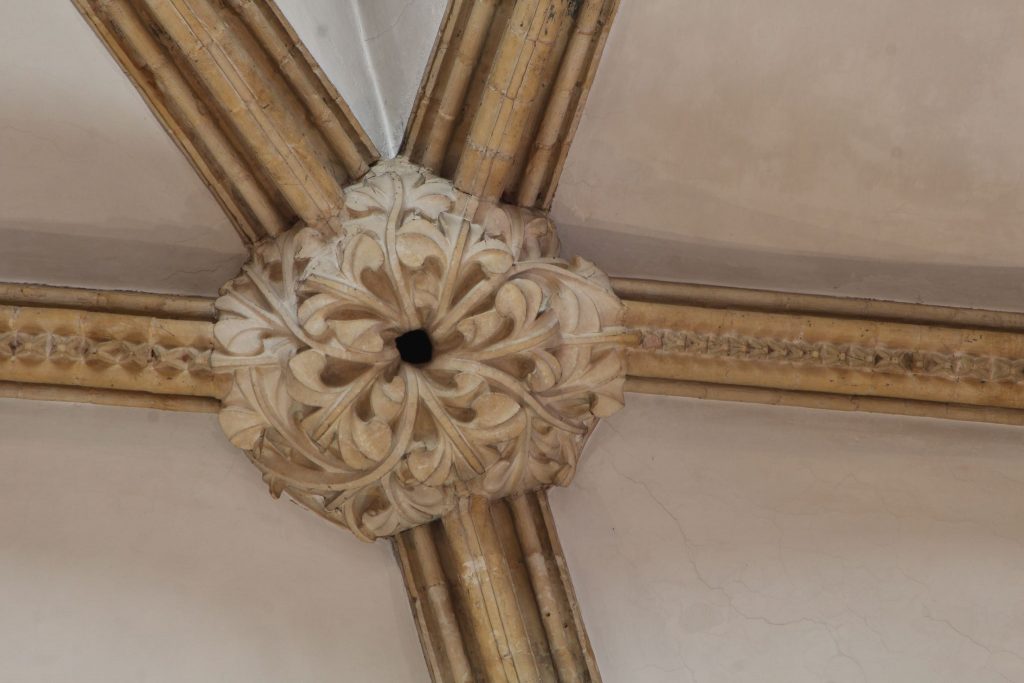
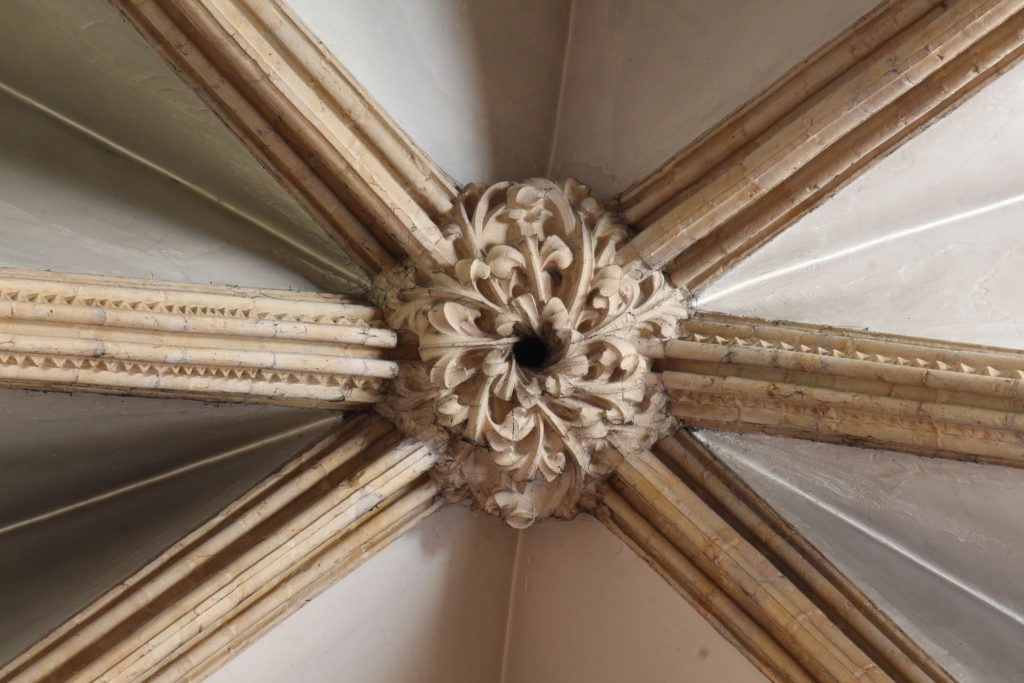
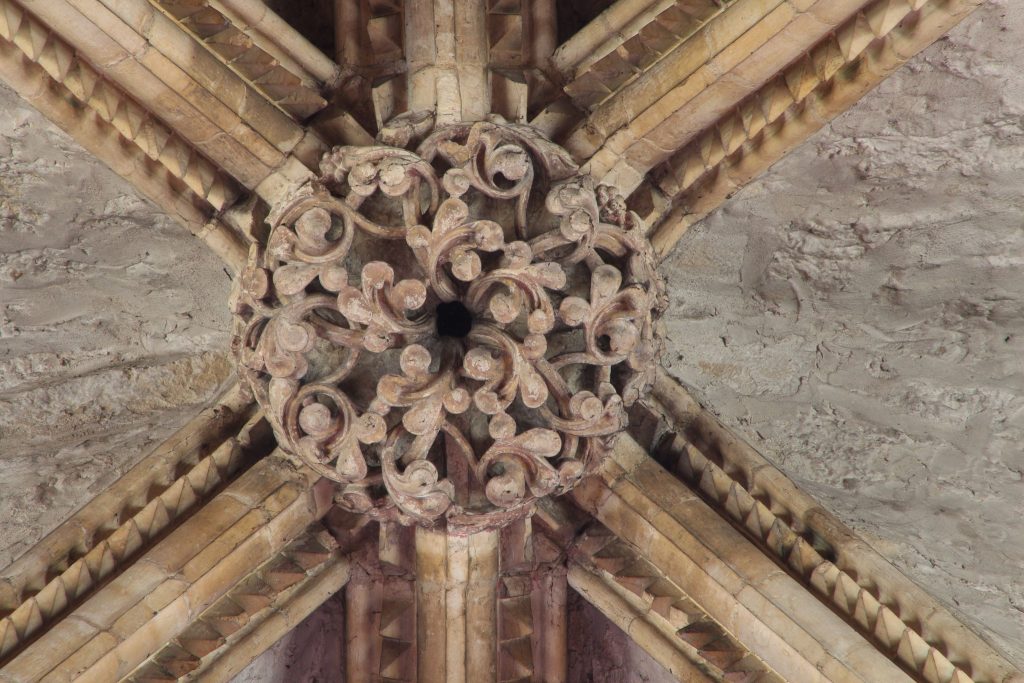
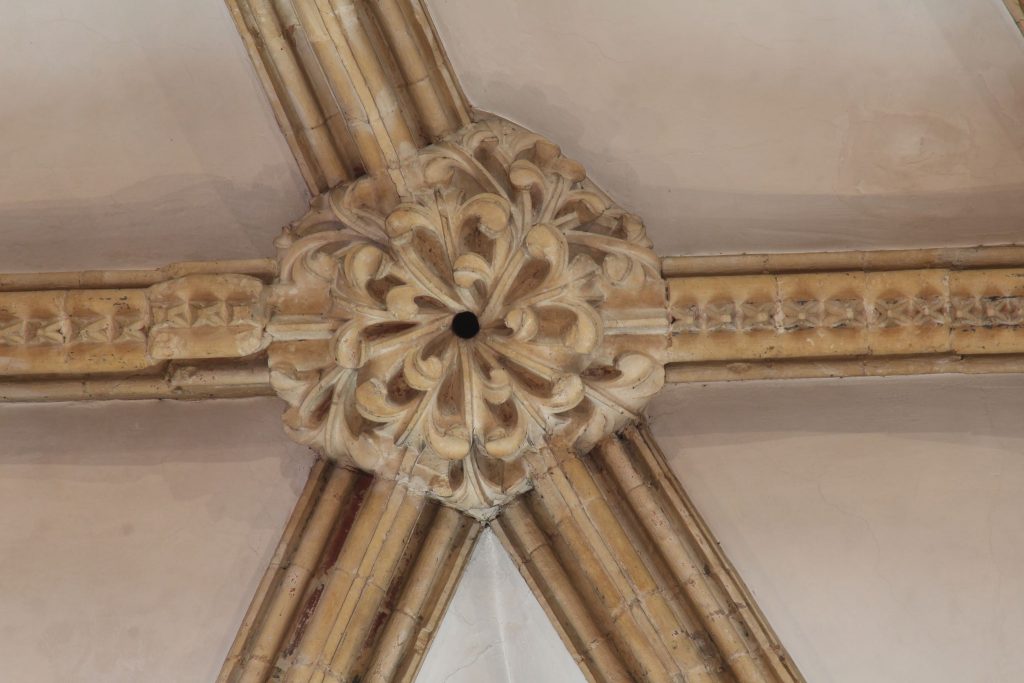
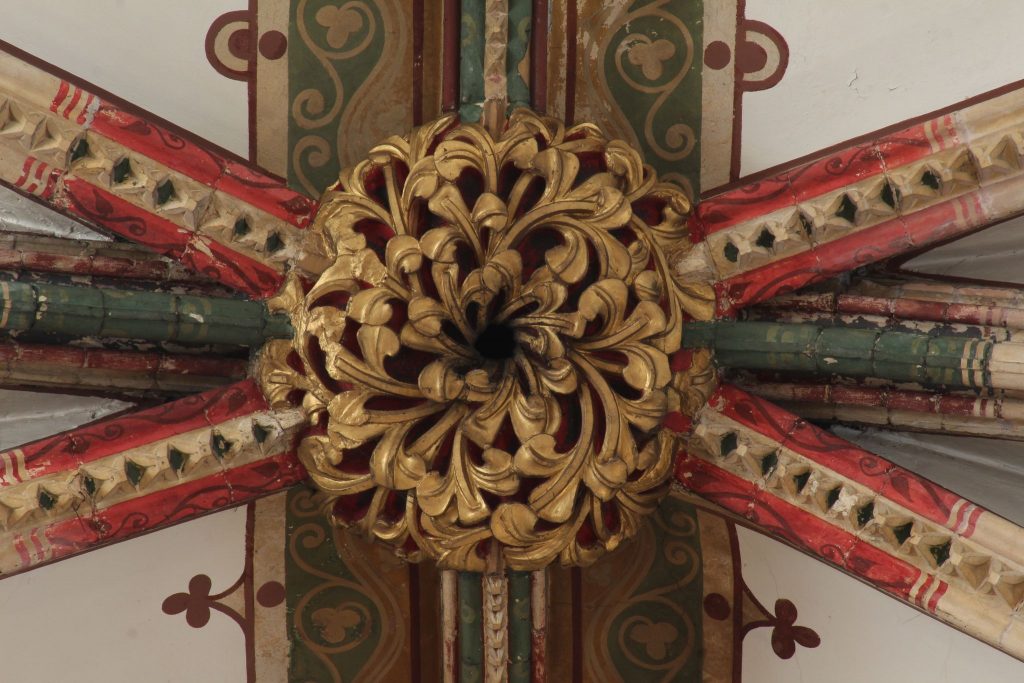
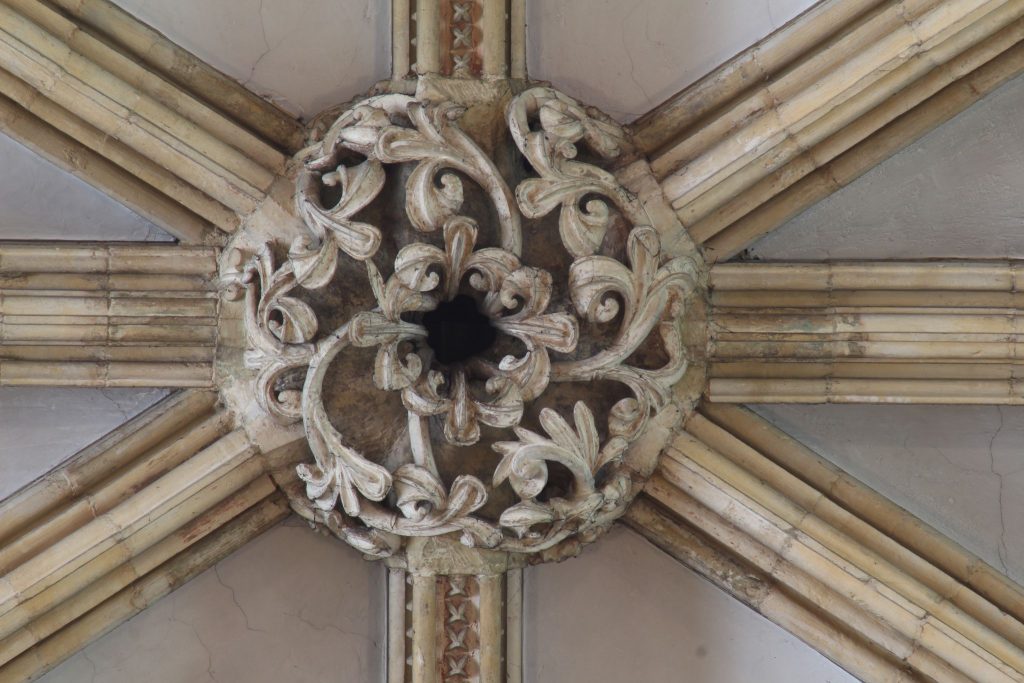
In high vaults of the east transept and St Hugh’s Choir (c. 1194-1208) the bosses consist of a ball of sculpted trefoils. Each trefoil has a stem continuing right up to the tip of the central foil, while the other two foils are sharply defined by a curved centreline. Originally the bosses would have been brightly coloured with gilded leaves on a red ground. Similar foliage can be found in the later vaults of the great transept (c. 1220), but with noticeable differences in style. The central stem is broader and flat-ended, stopping just short of the tip, whilst the sharp centreline of the side foils is replaced by secondary stems.
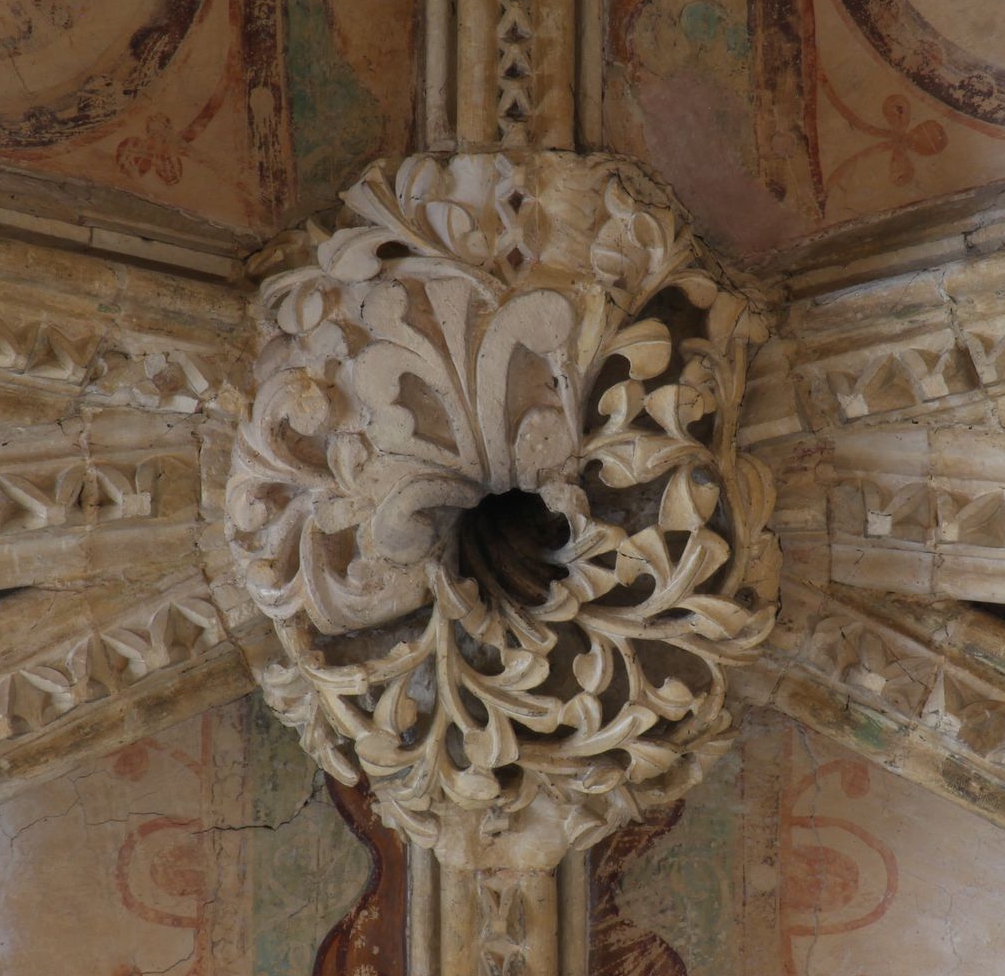
In the south transept, the bay adjoining the crossing (S11.1) includes a partially completed boss with several unfinished leaves. This demonstrates how the individual foils of the foliage were initially roughed out, producing simple shapes which could be used as the basis for more detailed carving.
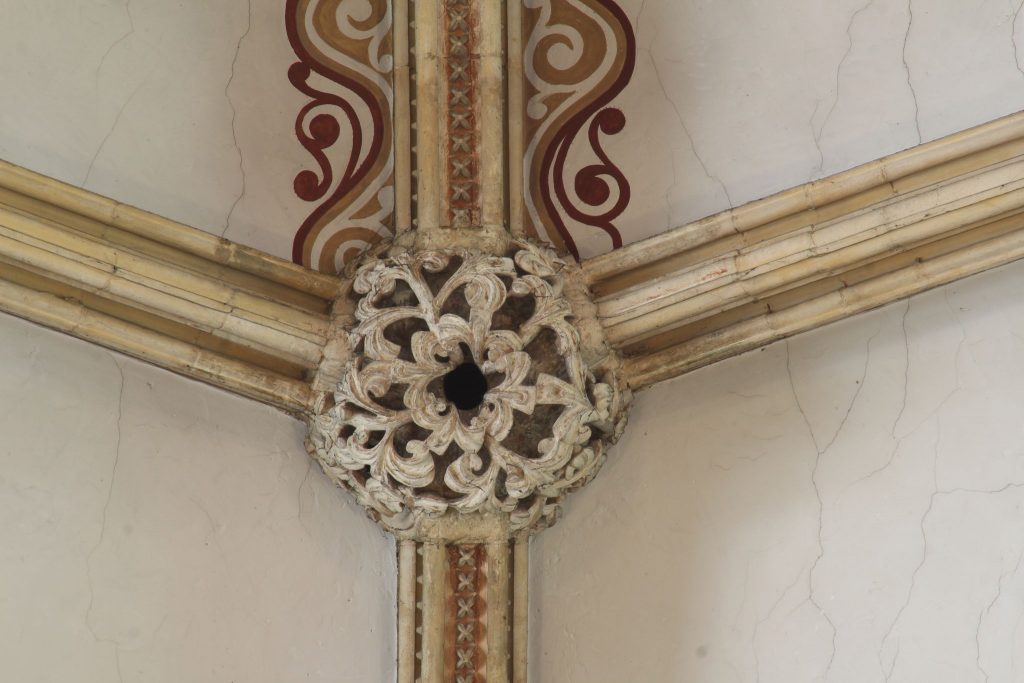
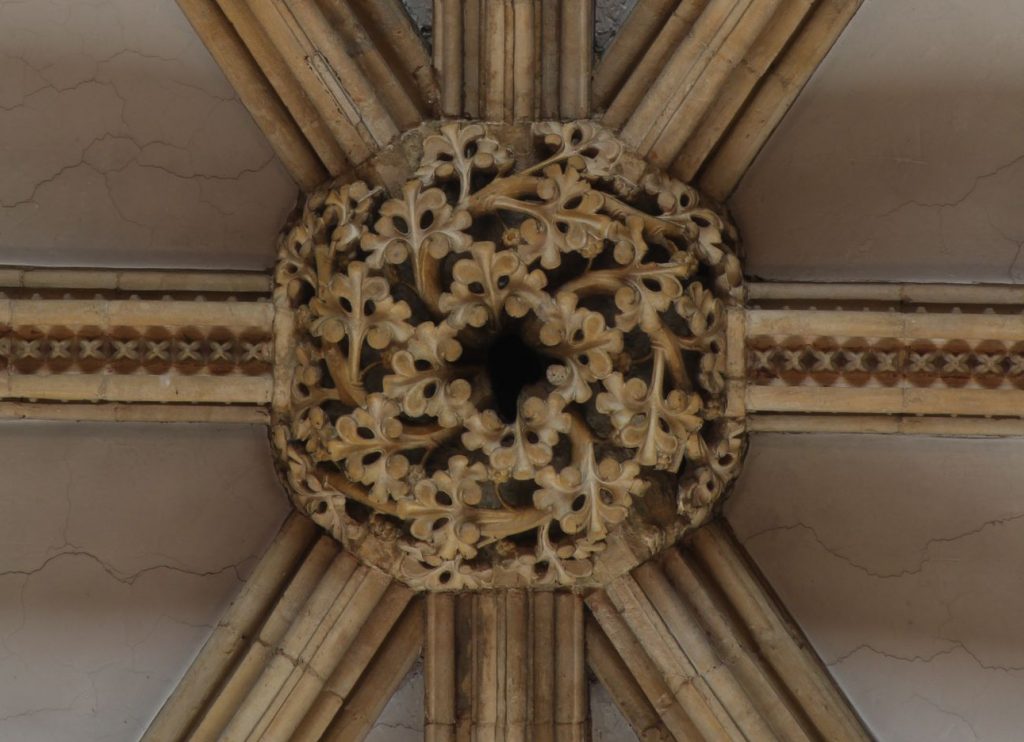
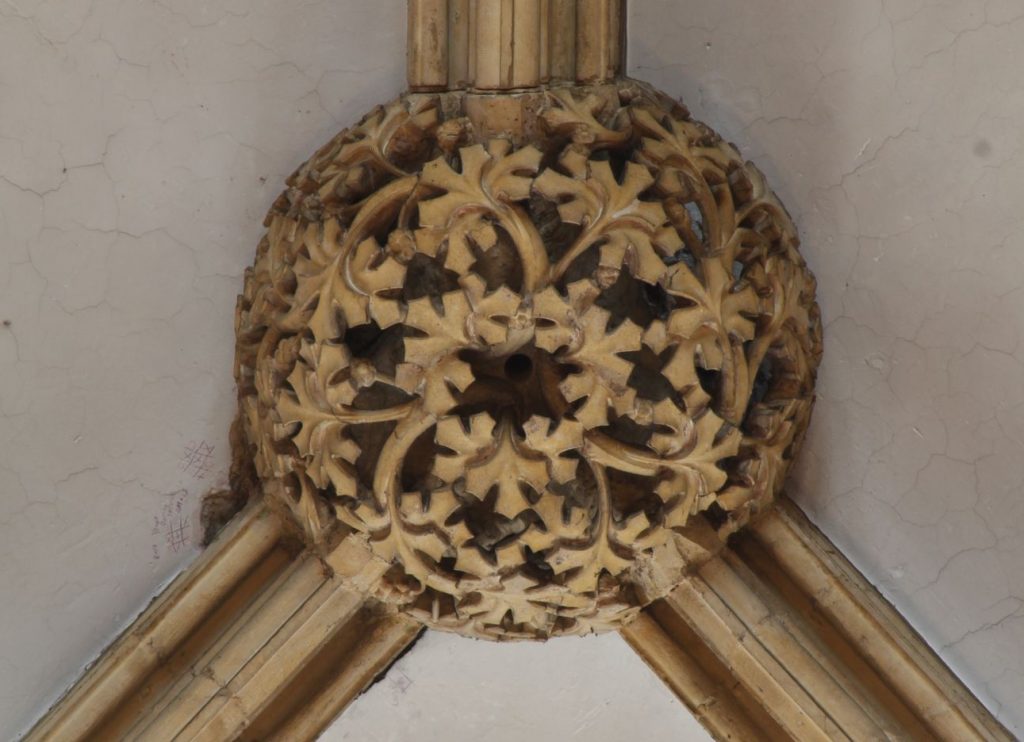
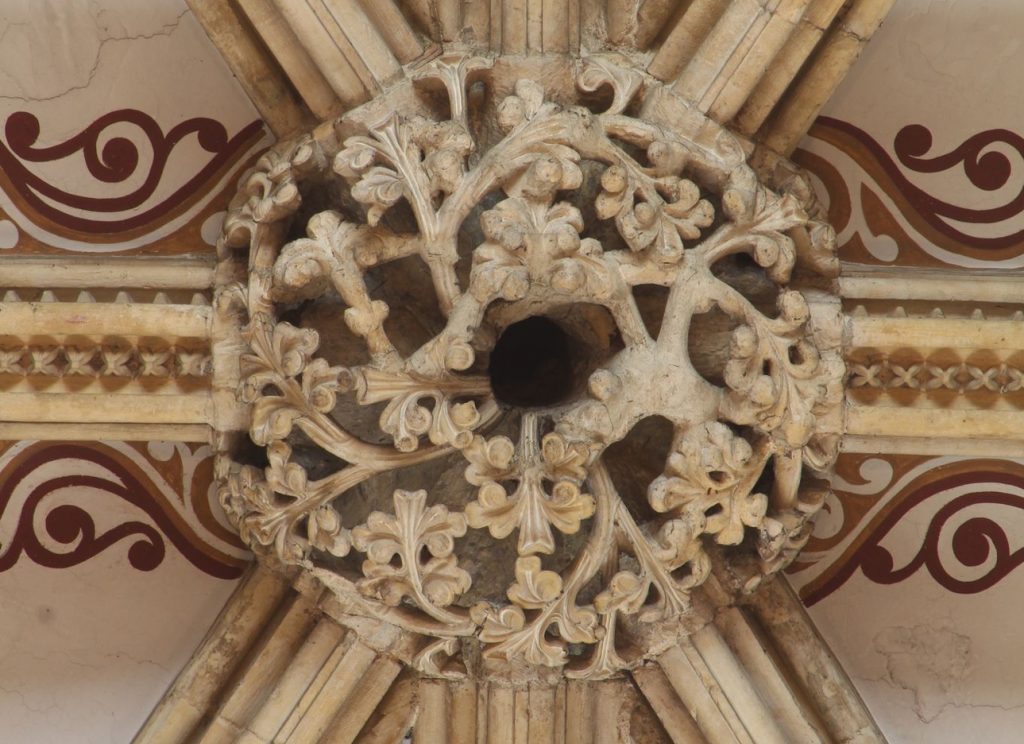
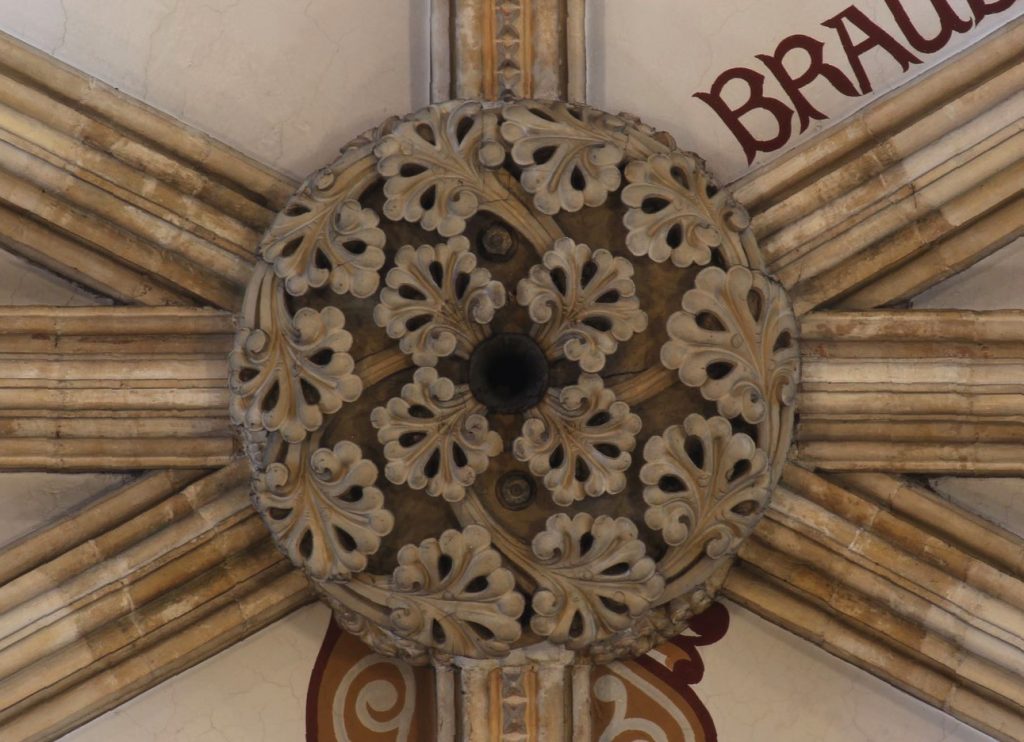
In the nave (c. 1240) the design of the foliate sculpture is far less formulaic and varies considerably from bay to bay. Some bosses have trefoils similar to those of the adjoining transept. However, the two side foils curl around as if to show their underside, a visual effect further accentuated by a stem-like border running around the edge of each leaf. This creates a pinched loop around the top of the central stem, a feature which is more or less accentuated in different bays. Some bosses feature alternative designs of foliage, including leaves with additional foils or sharp, angular shapes as well as notional berries or flowers. There are also figurative sculptures in the south nave aisle, including images of Christ, the Agnus Dei, various faces and beasts.
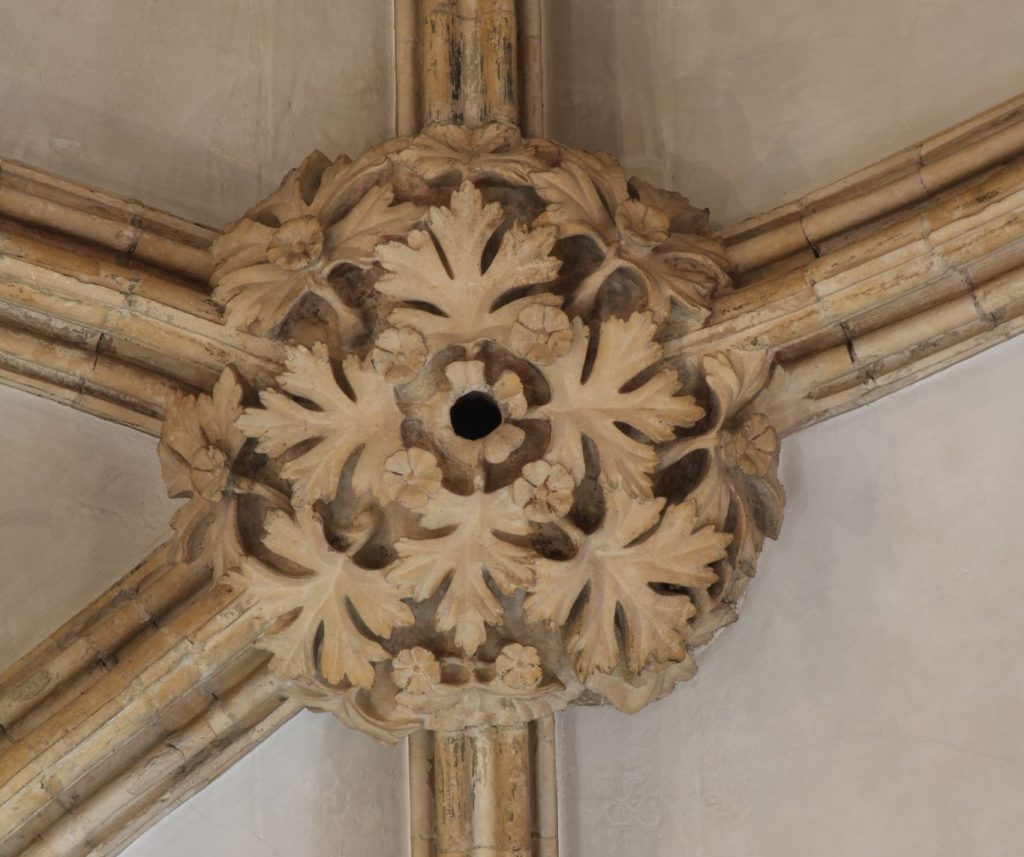
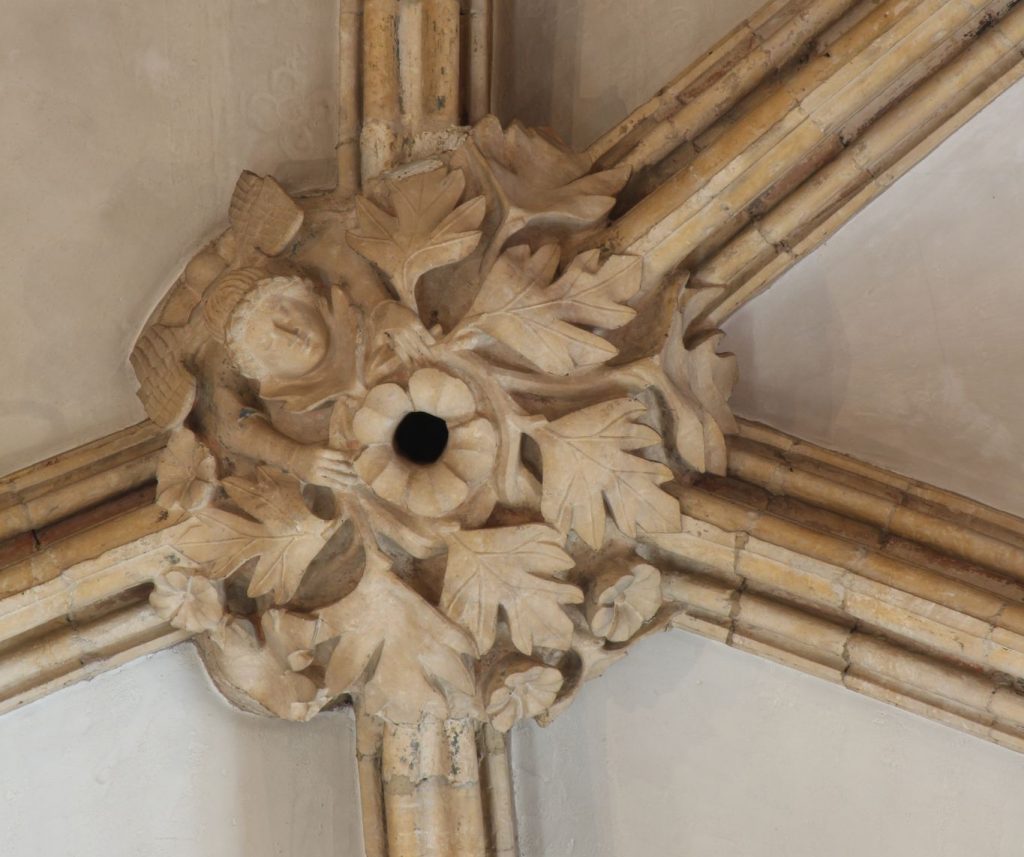
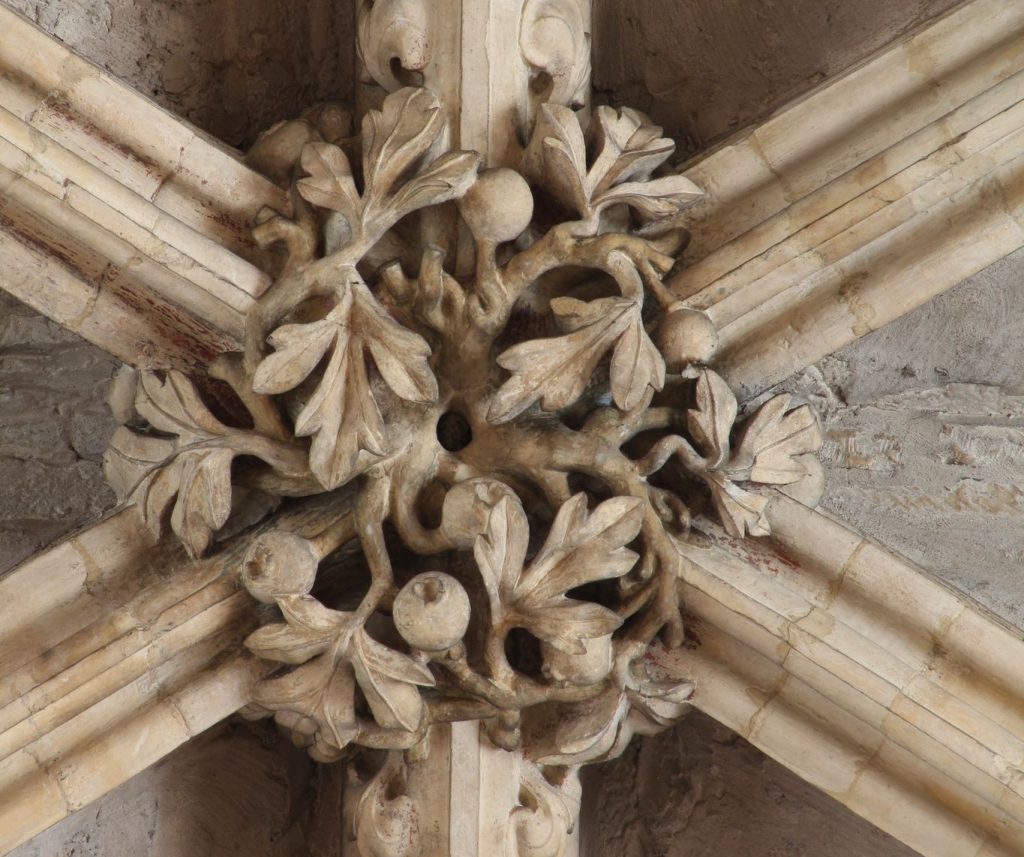
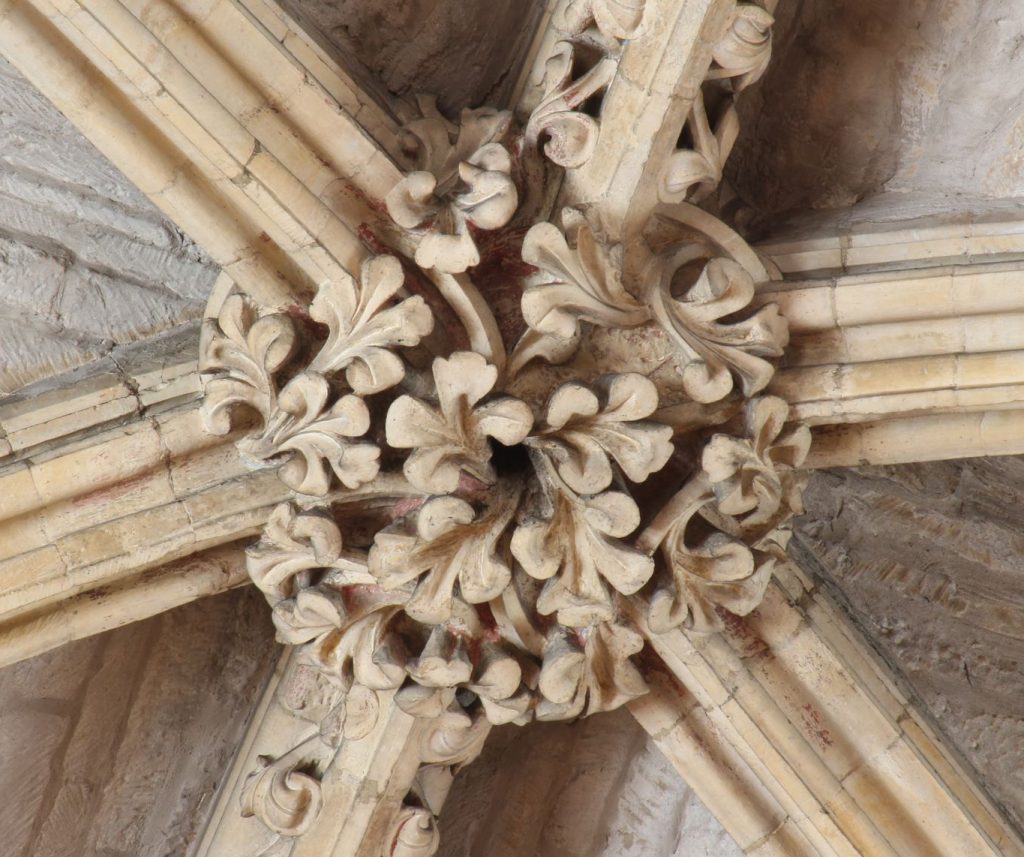
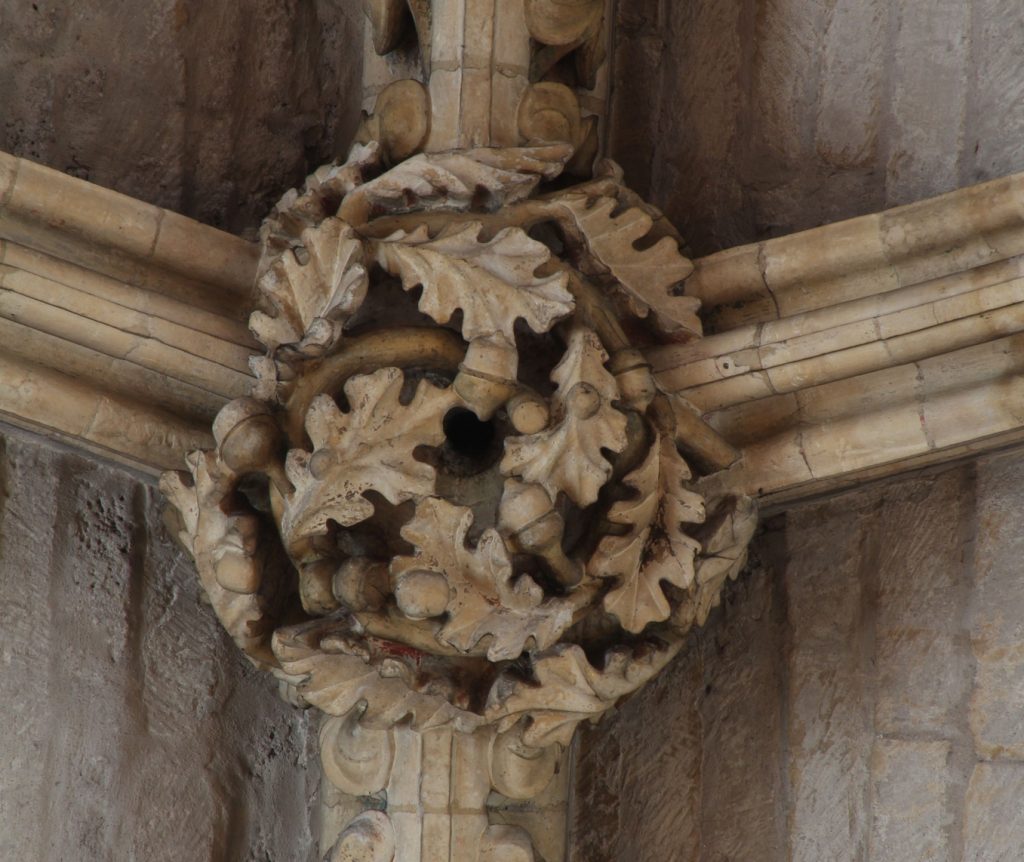
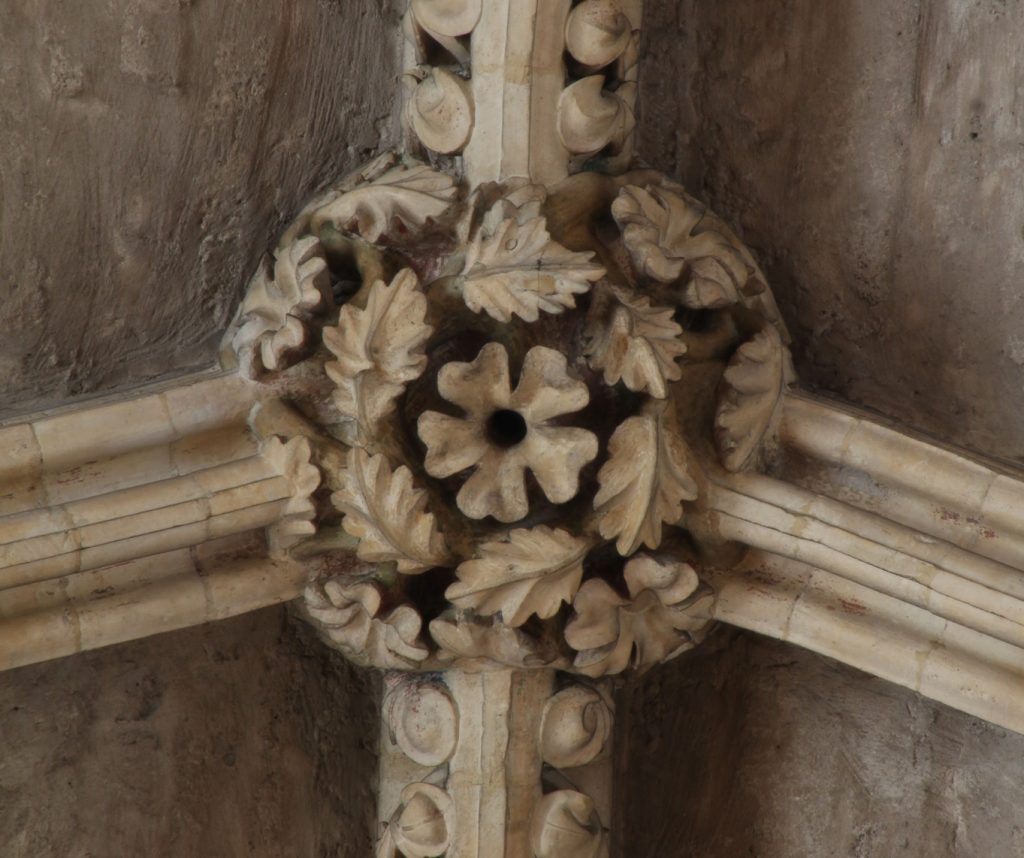
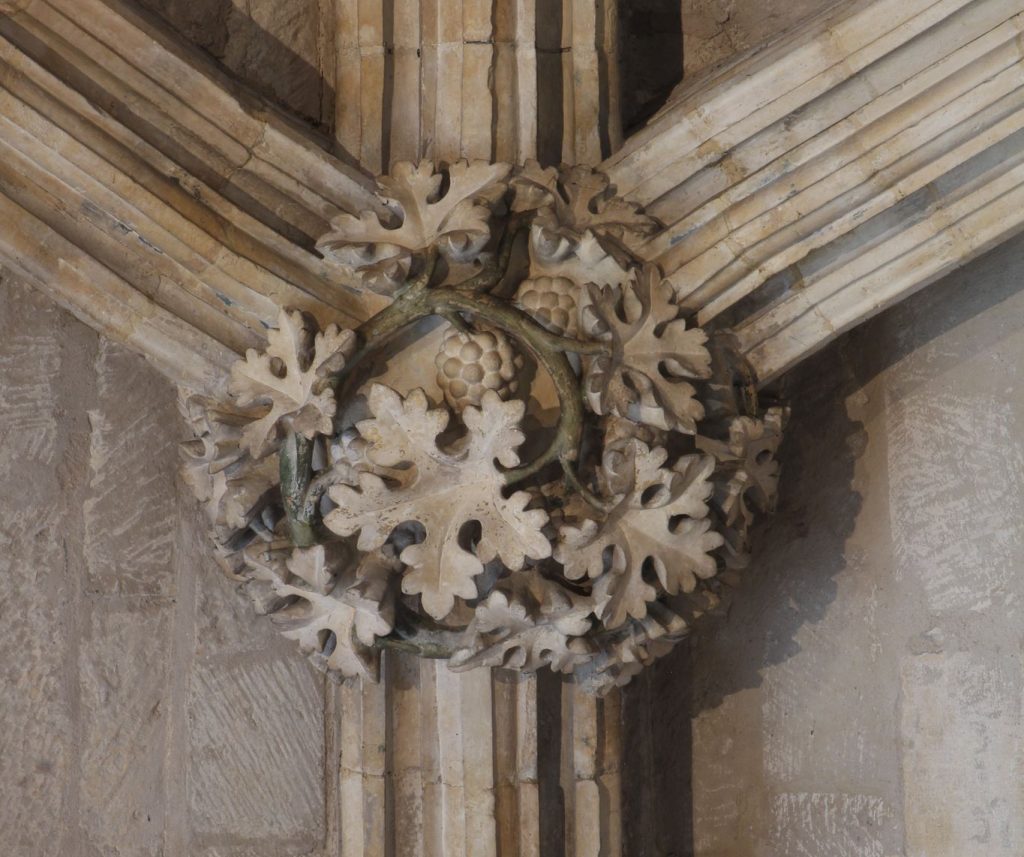
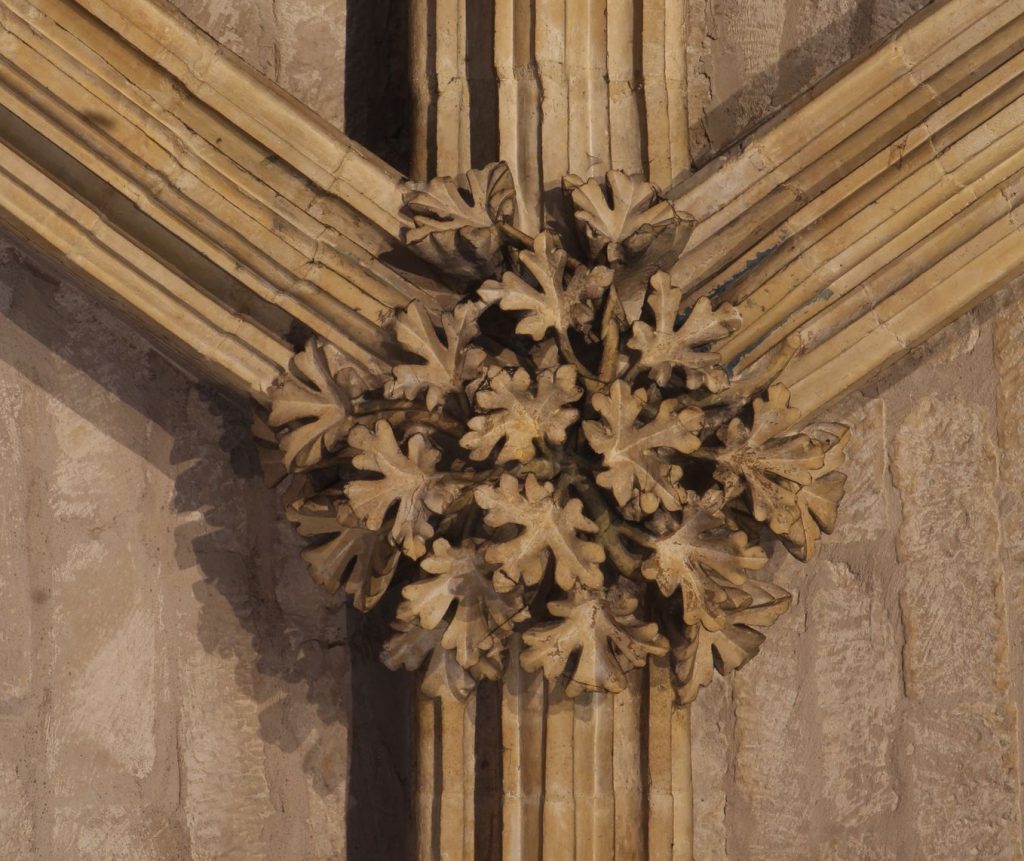
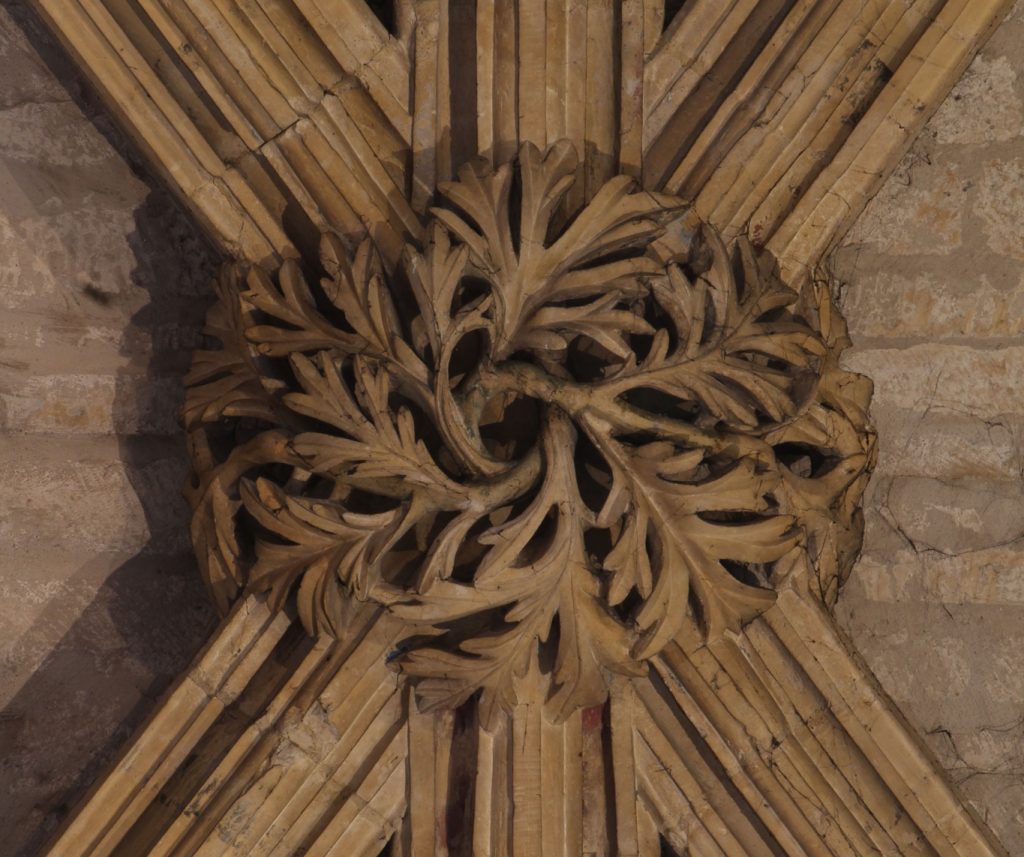
Whilst a few of the bosses in the Angel Choir display a variation on the pinched loop trefoils found in the nave, most are covered in highly naturalistic foliage that can usually be identified with specific native plants. Hawthorn is common, sometimes with berries; sometimes in flower. Field maple, vines and oak leaves are also used, and at least one boss may represent wormwood. In the Angel Choir aisles, there are also several figurative bosses. At the east end there are several narrative scenes and figures, including the coronation of the Virgin, King David playing his lyre, a discussion between a king and a prophet and possibly one between a prophet and an evangelist. Many of the remaining bosses feature monstrous beasts, largely in the form of dragons with human faces. Men cross swords with mermen. Draconine creatures with serpentine necks stalk their way through foliage, fight or kiss, whilst in one boss three dragons can be found intertwined, biting deep into each other’s necks as their limbs and tales weave their way through the mouldings of the ribs below.
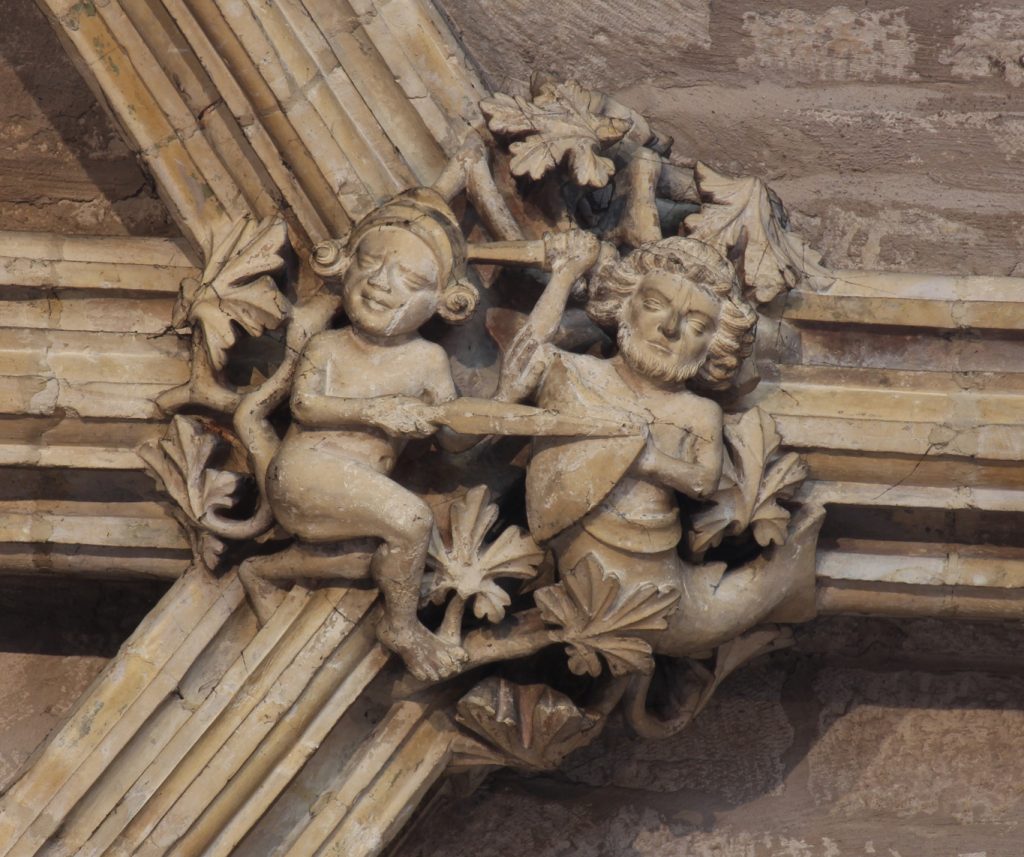
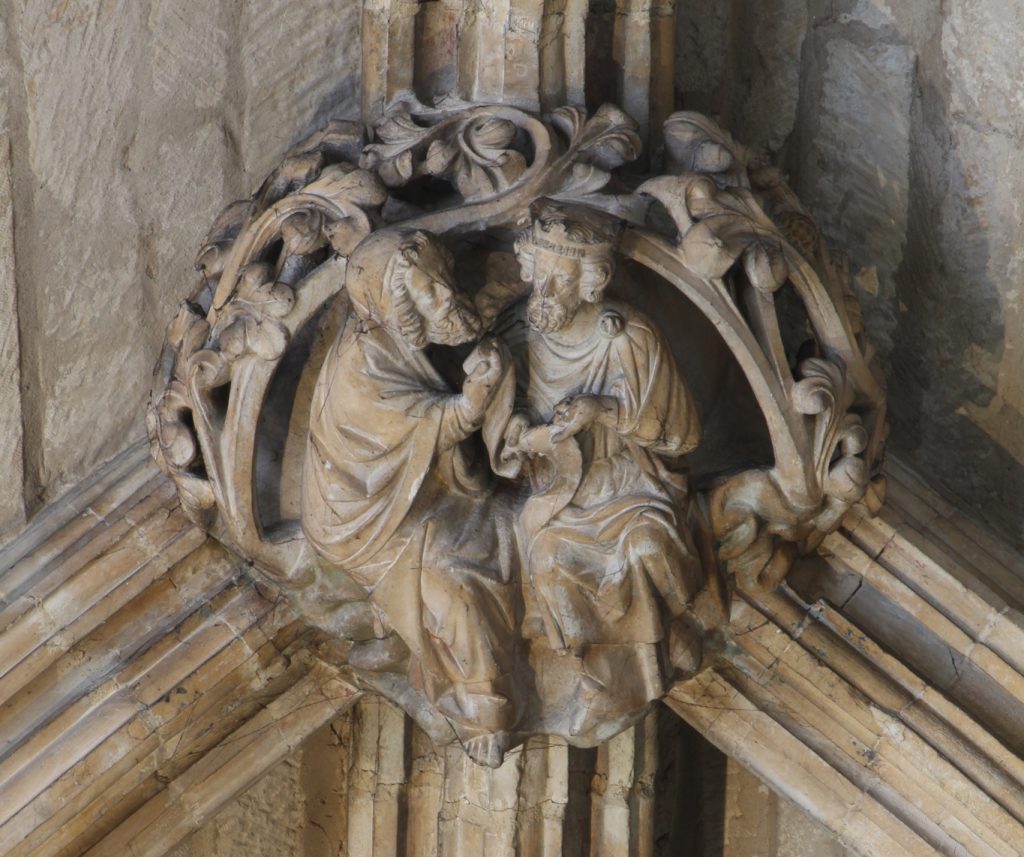
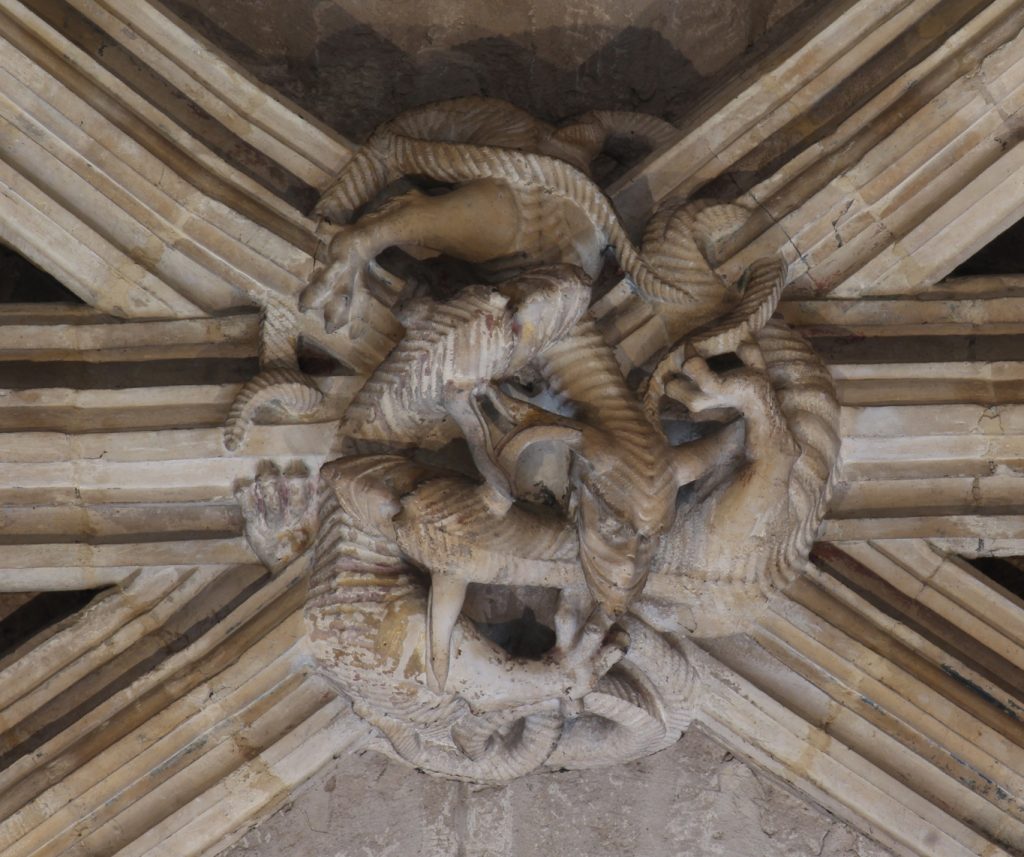
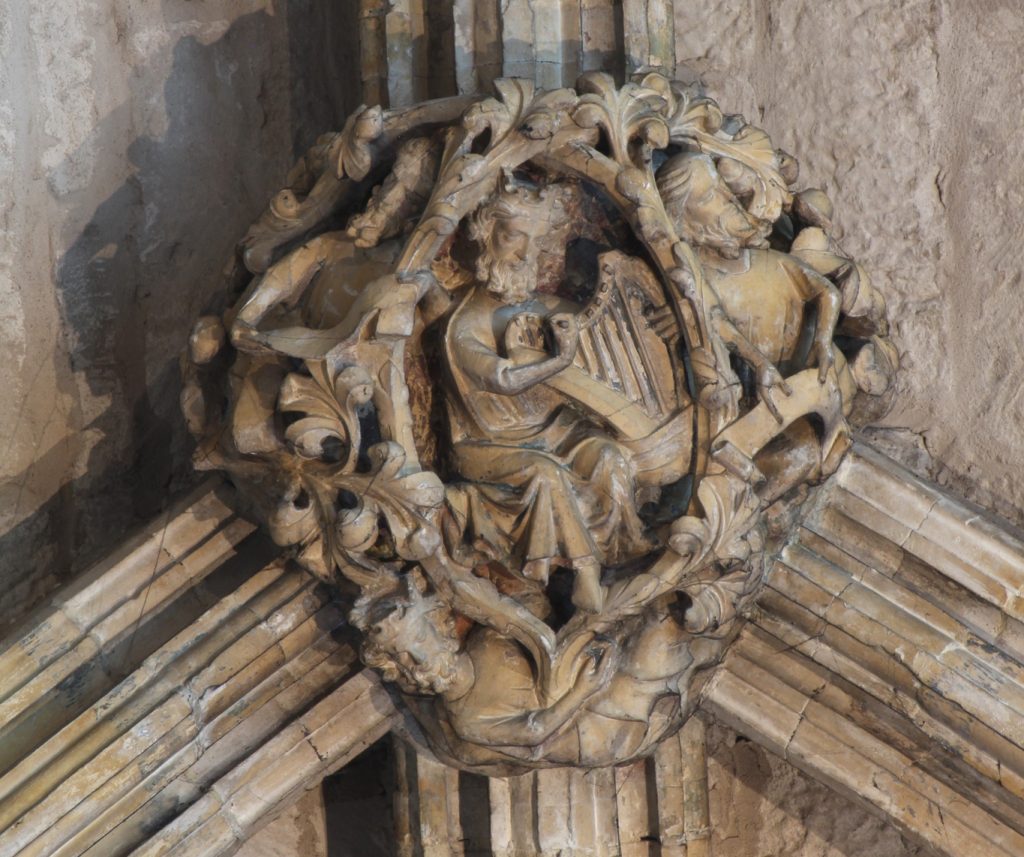
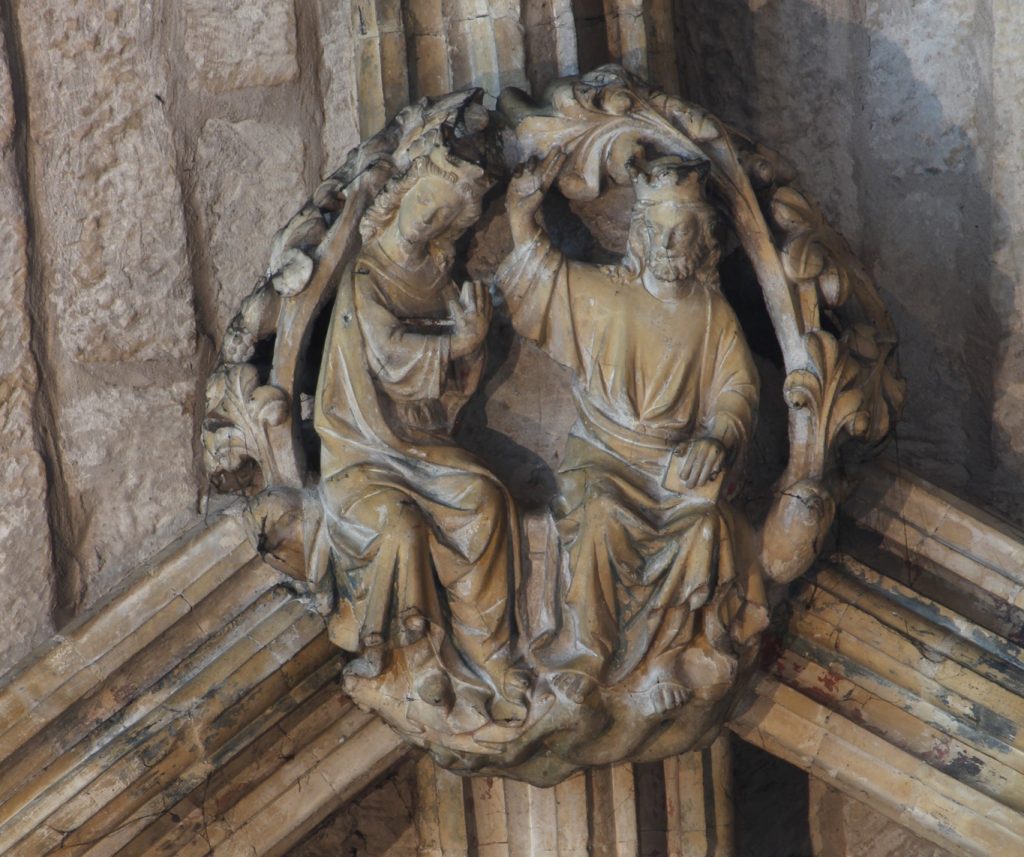
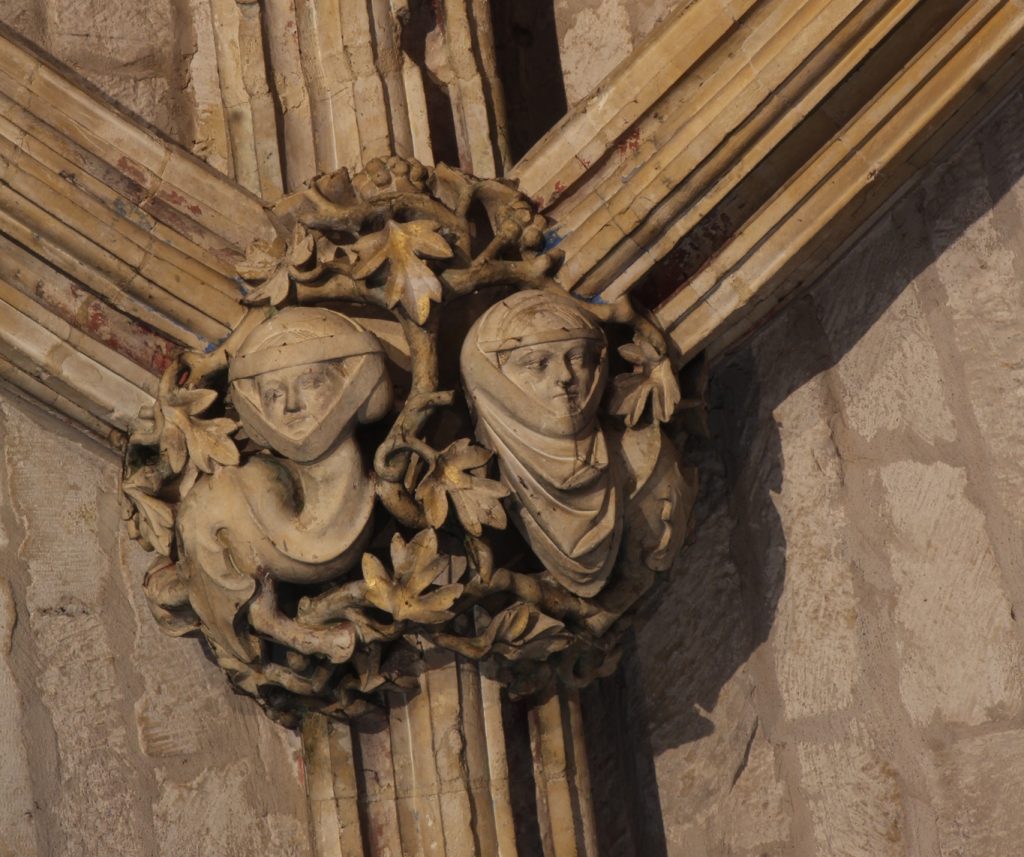
Rib Mouldings
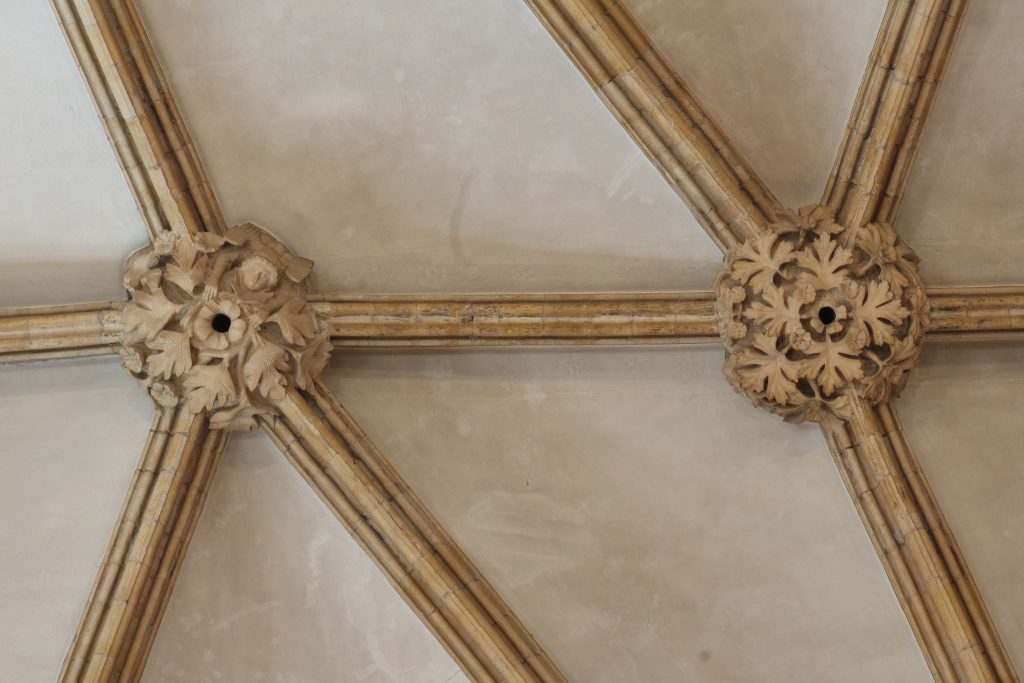
The ribs at Lincoln were defined by projecting a two-dimensional moulding profile along a two-dimensional curvature, resulting in a full three-dimensional piece of stonework. These moulding profiles could vary significantly from bay to bay, their forms often being unique to particular phases of the works. Such profiles were used to articulate the surfaces of the ribs through a series of ornamental projections and hollows, resulting in an undulating surface of stone. On occasion these mouldings would also provide opportunities for sculptural carving in its own right, with bands of flowers or foliage further increasing the decorative variety of the ribs.
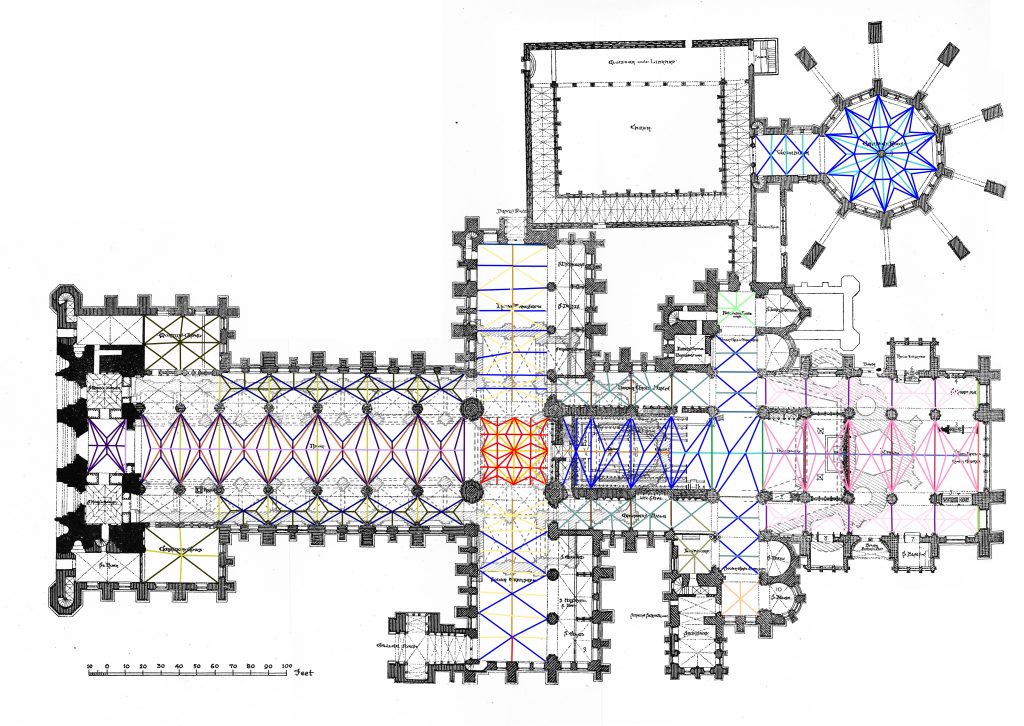
Many sets of ribs within the cathedral make extensive use of a decorative motif called dogtoothing. This consists of a line of pyramidal shapes with notched sides, a form resembling pointed teeth. In the east transept, the transverse pairs of sexpartite ribs have two lines of small dogtooth, one on each side of the moulding. The same profile was also used for the ribs in the aisles of St Hugh’s Choir, but not in the crazy vault above. There the ridge ribs have a single central line of dogtoothing, a motif which was repeated in the Great Transept.
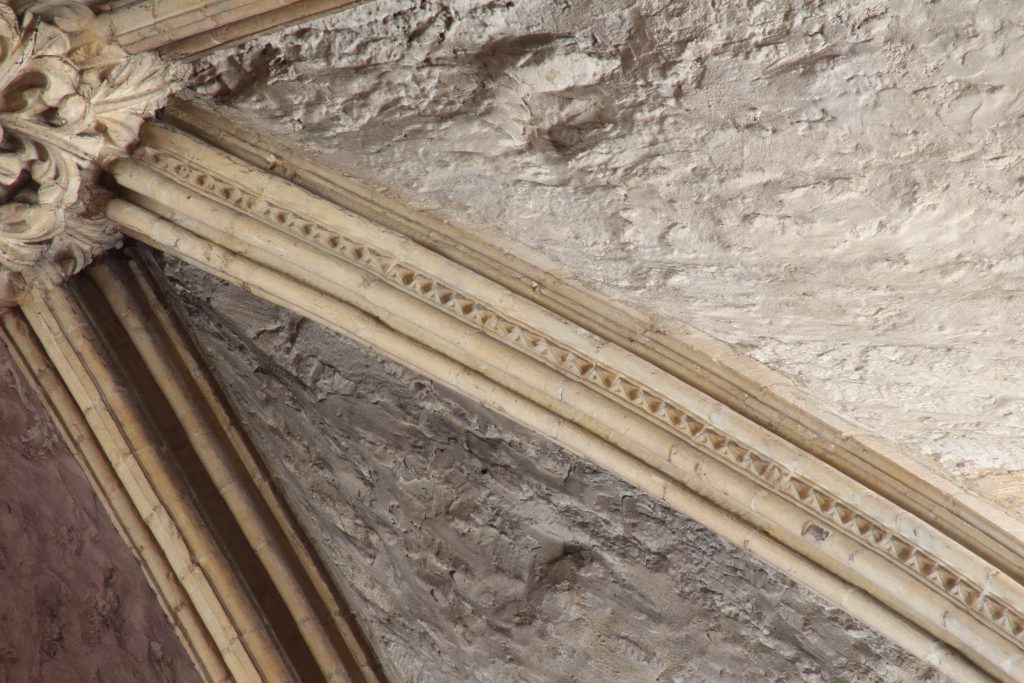
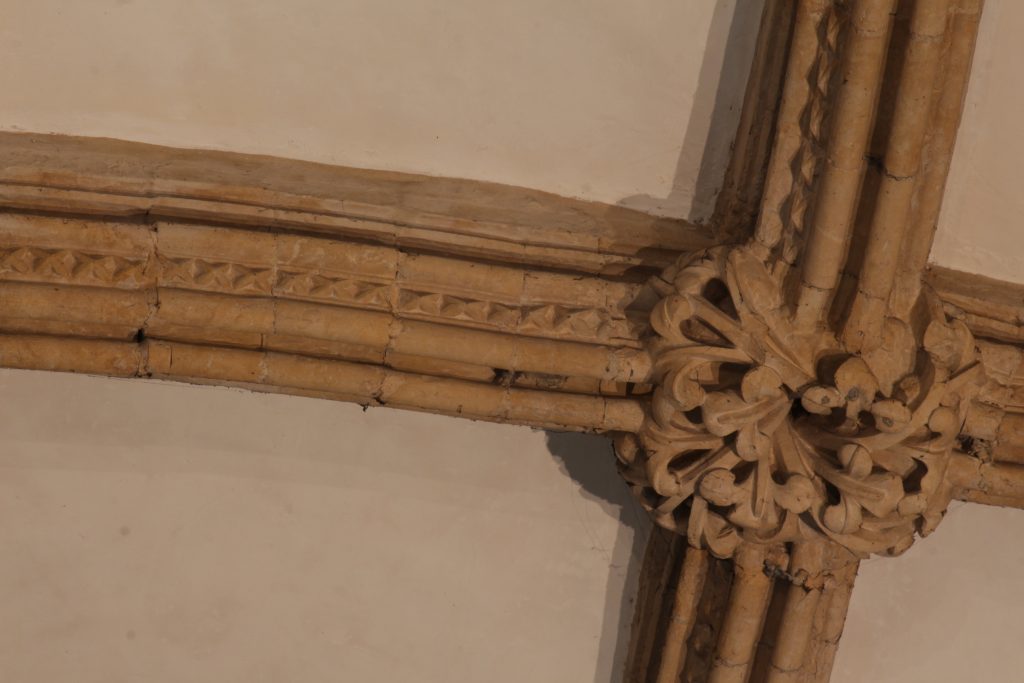
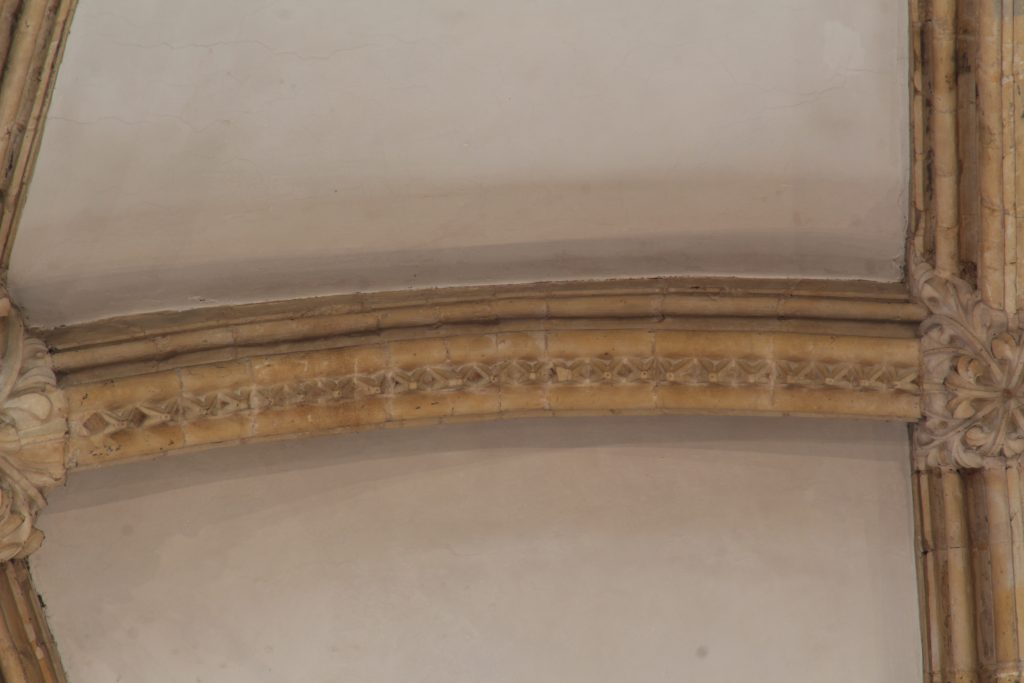
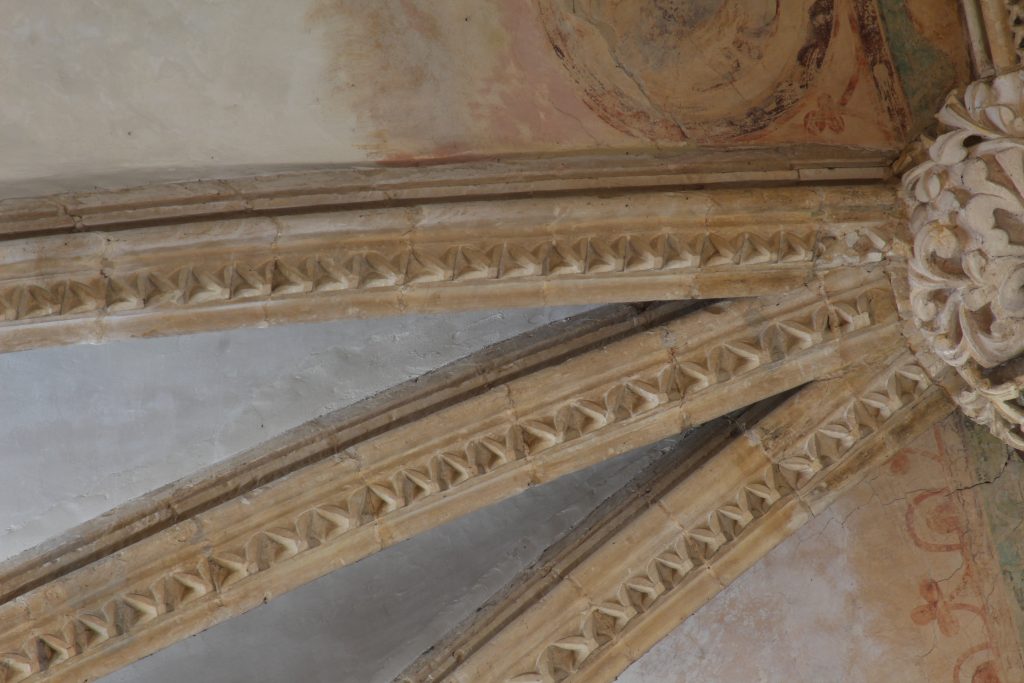
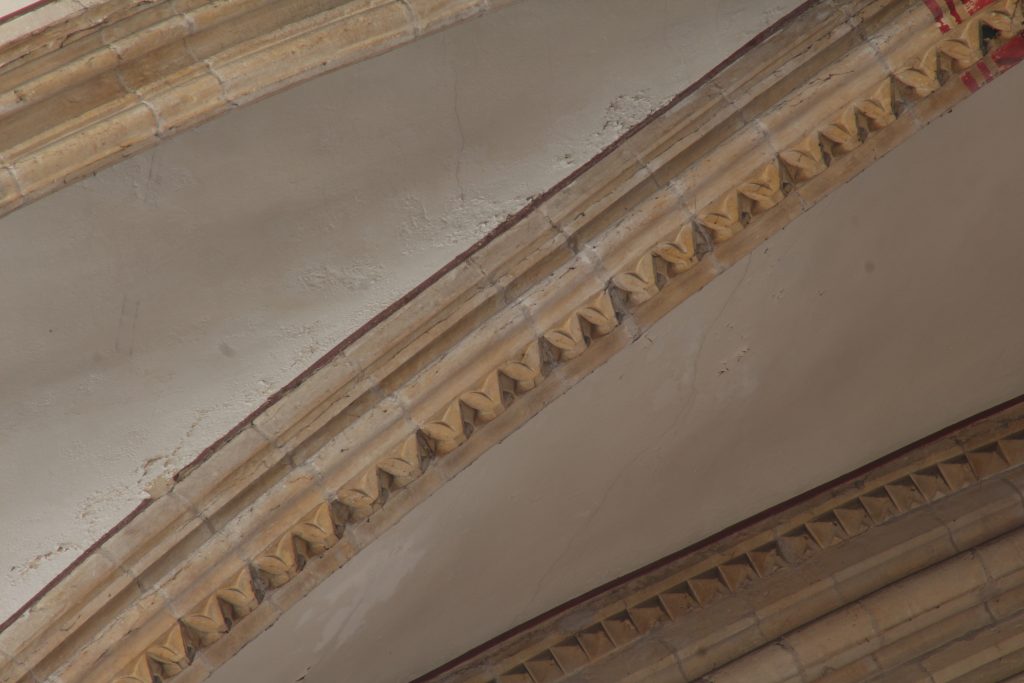
The remaining ribs in St Hugh’s Choir make use of a simpler moulding with a central fillet, a projecting line of masonry with a square profile. This profile was also used for the other sexpartite ribs of the east transept and in the Great Transept. In the latter case a new moulding was also introduced, similar to the single line of dogtoothing used for the ridge rib, but with a far larger central motif that obscures the mouldings on either side. This was used for the diagonal ribs in the north transept and the transverse ribs in the south, with the exception of the bay adjacent to the crossing (S11.1) where it appears for all of the ribs except the ridge. The reasons for this variation are unclear, but the presence of a complete bay of the new moulding between the two transept arms could imply a conscious attempt at transition between the two designs.
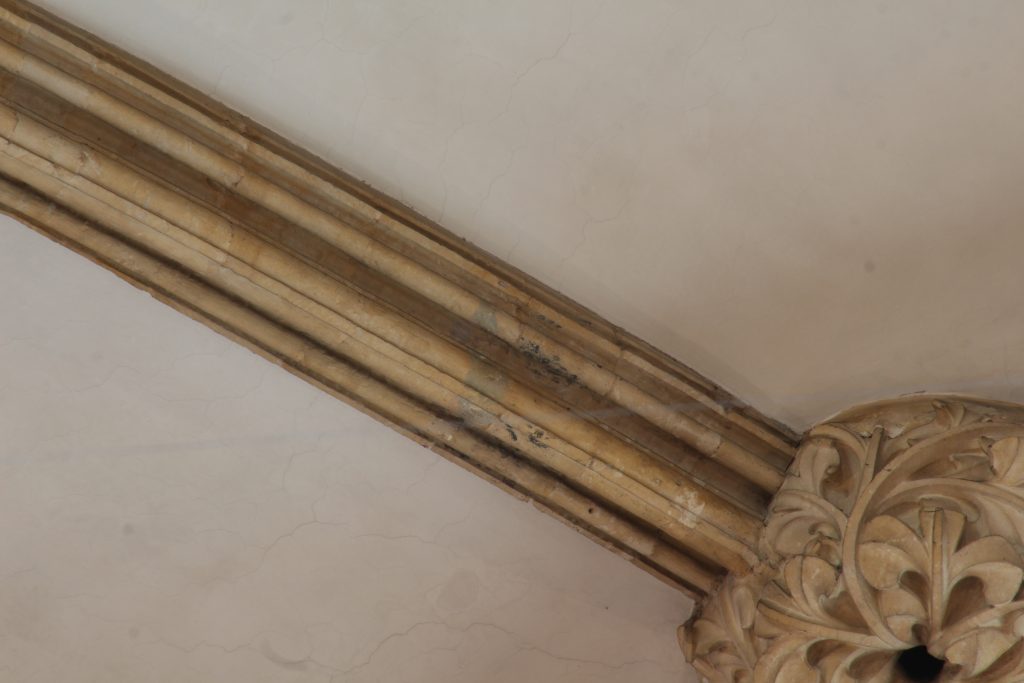
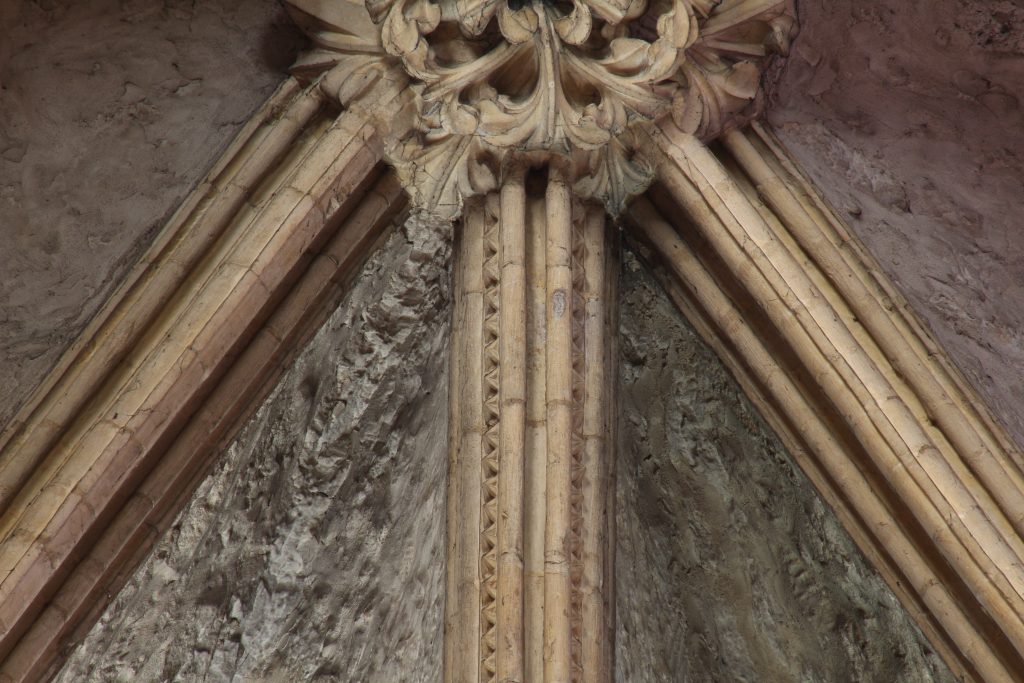
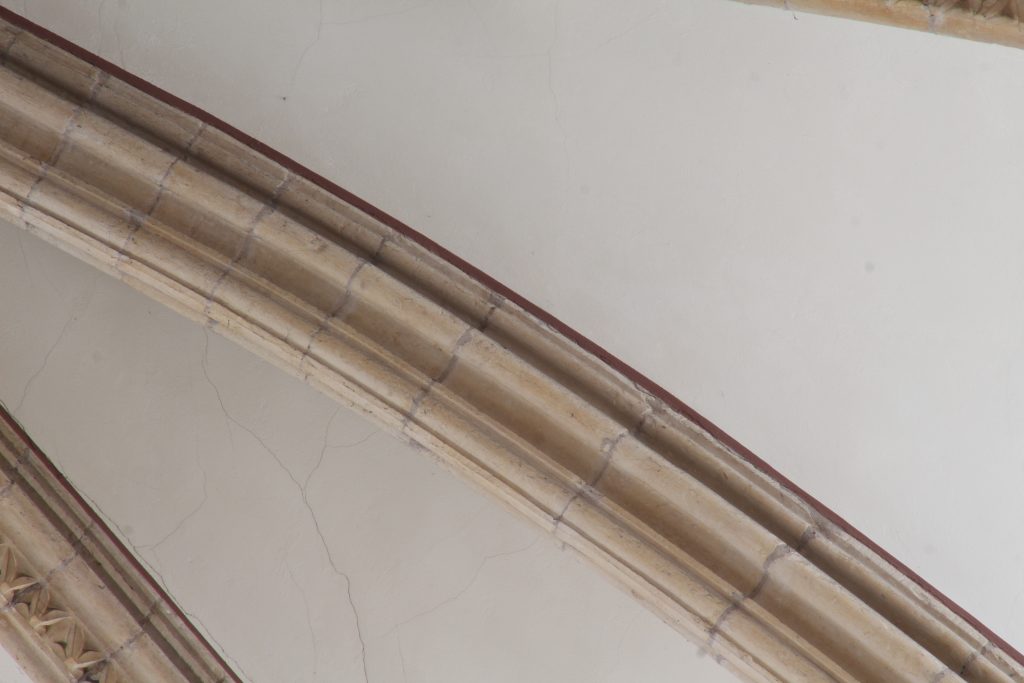
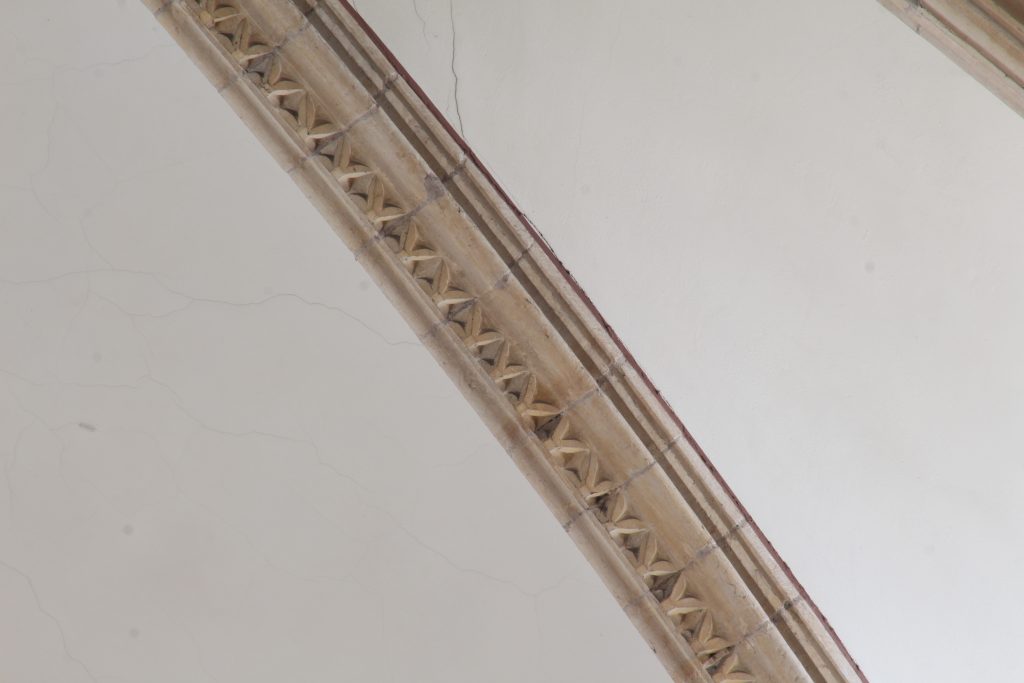
The filleted moulding common to the east transept, choir and great transept was also used for the Chapter House and its vestibule. This provides a strong sense of visual continuity between the different vaults of the building, despite the fact that they were built over the course of several decades. For the works in the nave, however, a completely new set of profiles was adopted, including several variations with a central fillet and a triple set of dogtoothing for the ridge rib.
A comparable approach was also adopted for the ribs in the high vault of the Angel Choir. Dogtooth ornament was entirely abandoned and instead the central ridge rib was decorated with scrolling creepers of foliage. Similar sculptural details can also be found in the Angel Choir aisles, where the ridge ribs feature lines of miniature flowers on their sides which are almost invisible from the ground.
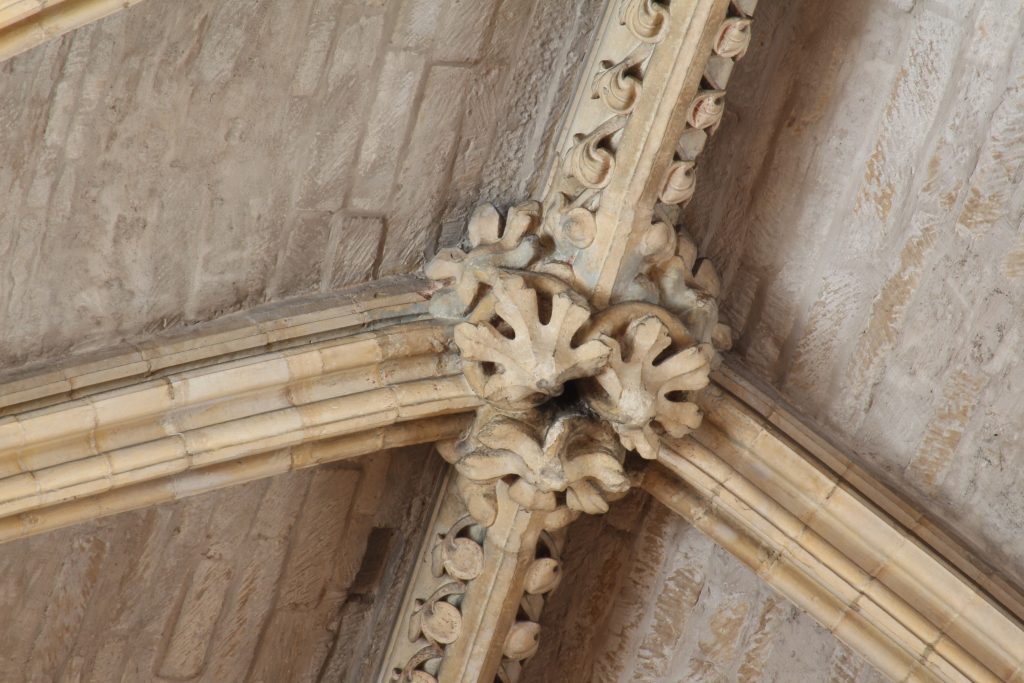
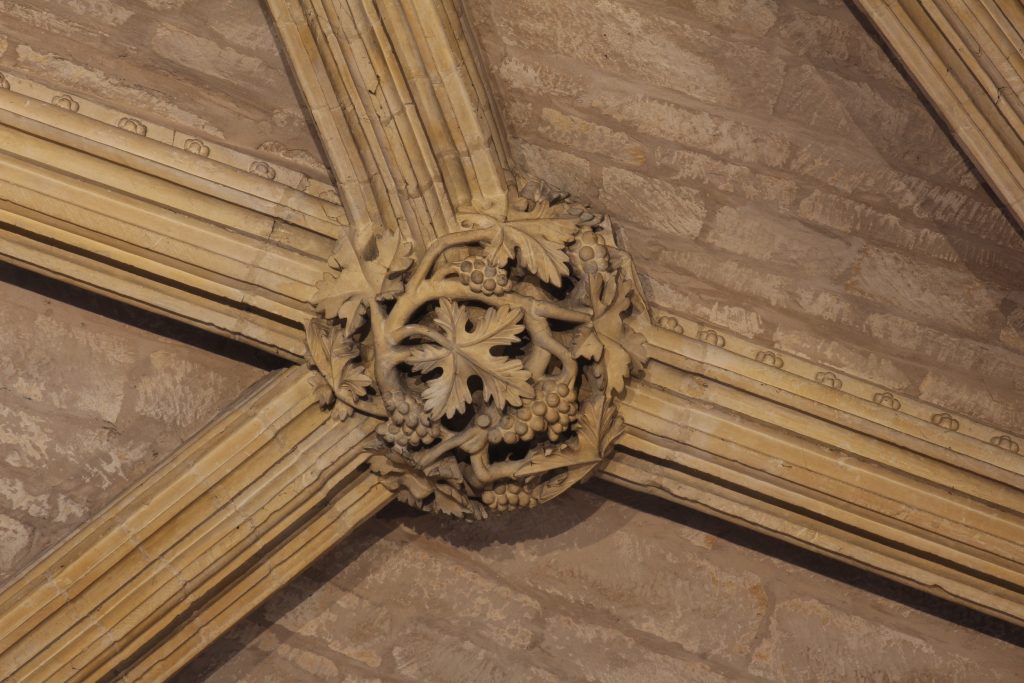
Whilst the use of mouldings can help us to identify similarities and differences between particular sections of vaulting, they do not necessarily provide a chronology for their construction. This is demonstrated by the vault of the east crossing, which reproduces the form of St Hugh’s Choir. The naturalistic style for the bosses suggests that the vault may have been contemporary with the Angel Choir. However, the moulding of the ridge rib is entirely different, and those of the tiercerons are the same as the filleted moulding found in the adjoining choir bays. Whilst the designers could therefore have changed the profile of these mouldings, they instead decided to keep it in continuity with the existing fabric.
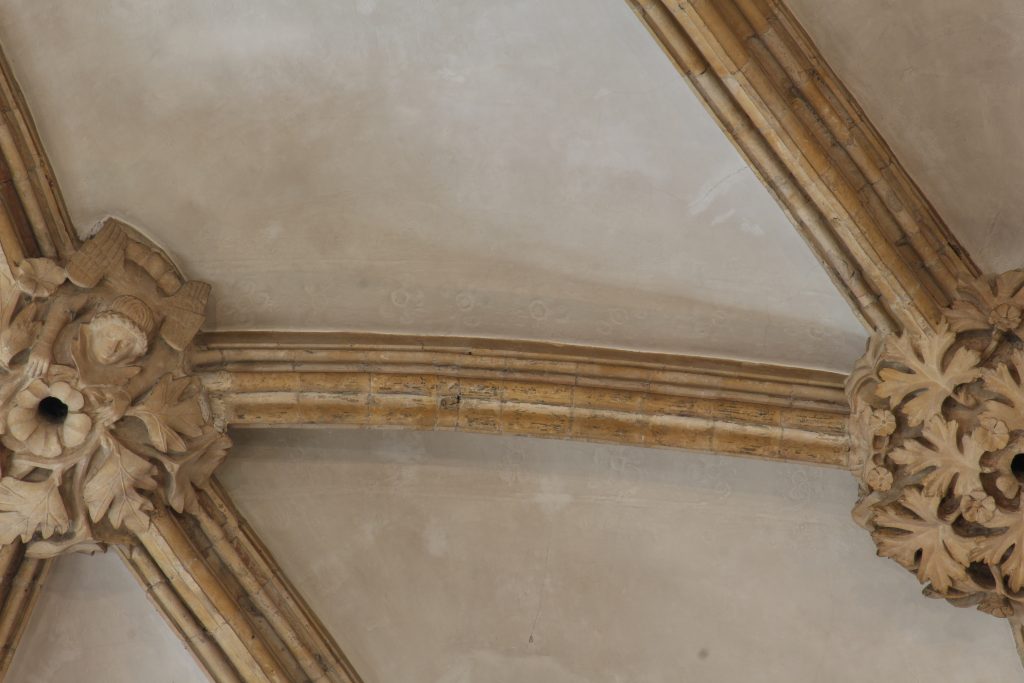
Sometimes, however, the mouldings can reveal dramatic differences from one section of vaulting to the other. In the southernmost bay of the east transept (S6.3), the mouldings and the style of the sculpture are differ greatly from those in the adjacent bays. This suggests that the vault was constructed at a later stage.
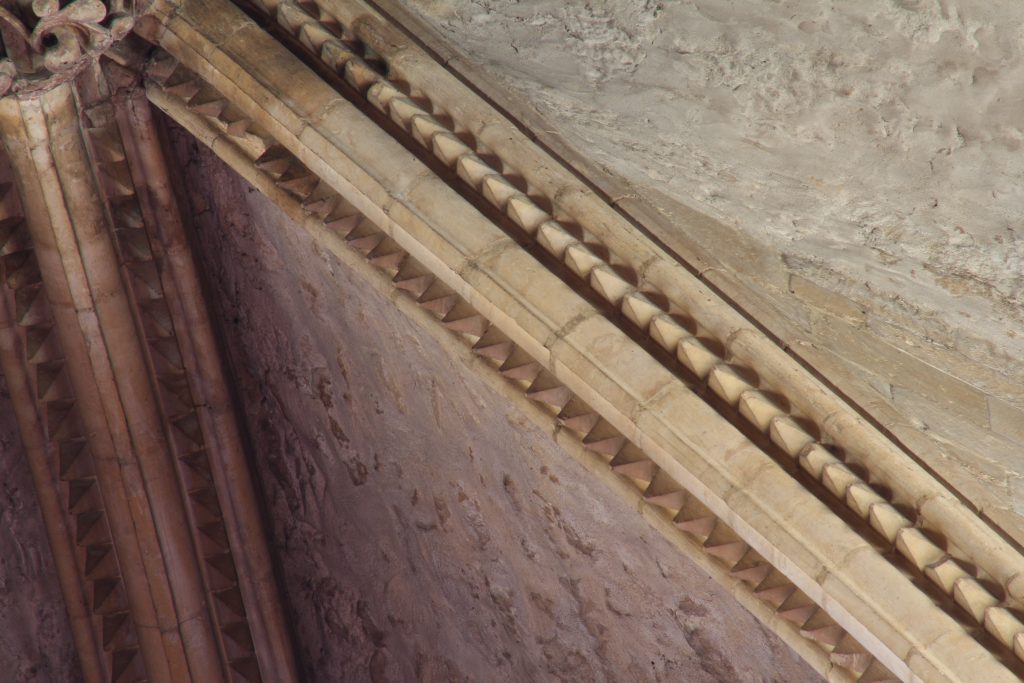

At times the differences in mouldings can also present us with intriguing puzzles to be solved. In the easternmost bay of the south aisle of St Hugh’s Choir (S7), the majority of the ribs follow the same pattern as the rest of the aisles. However, the diagonal rib in the southeast corner instead follows the profile of the adjacent transept aisle, which features alternating bands of oblongs rather than the dogtoothing of its counterparts. As the difference was also reproduced in the central boss, it is likely that it was the result of a decision taken before the construction of the vault, perhaps at the stage when the pier beneath it was installed. Whatever the case, this rib reinforces the point that medieval masons were quite capable of reproducing past forms depending on their need. Both continuity and variety appear to have been essential aspects of the design of vaults at Lincoln, whether at level of the geometry of its ribs or the intricate carving of their individual stones.
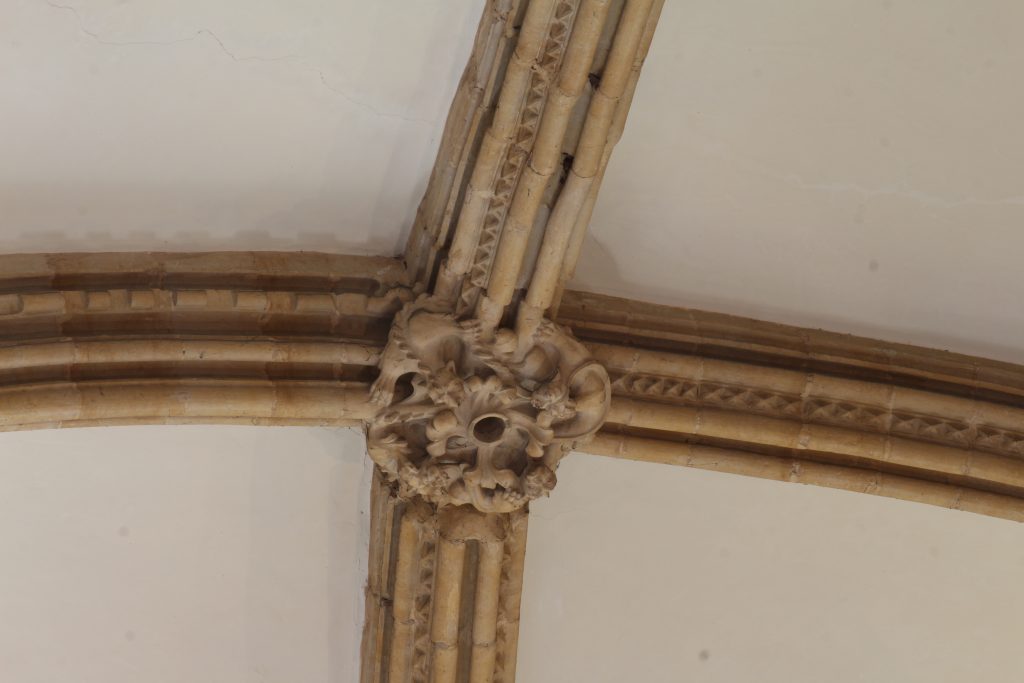
Further reading
- Baily, J. (1991) ‘St Hugh’s Church at Lincoln’, Architectural History, 34, pp. 1-35.
- Cave, C. (1936) ‘The roof Bosses of Lincoln Cathedral’, Archaeologia, 85, pp. 23-36.
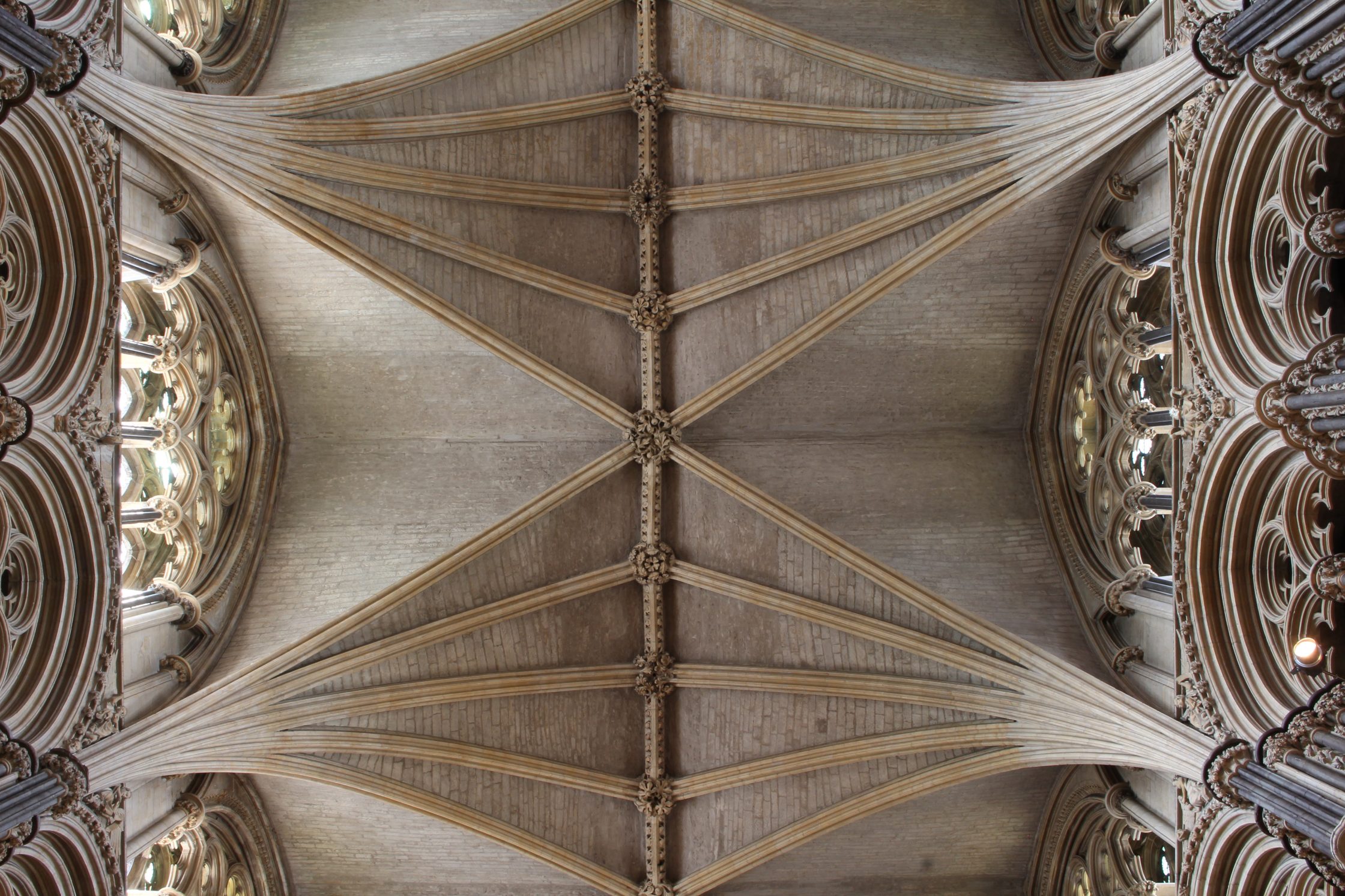
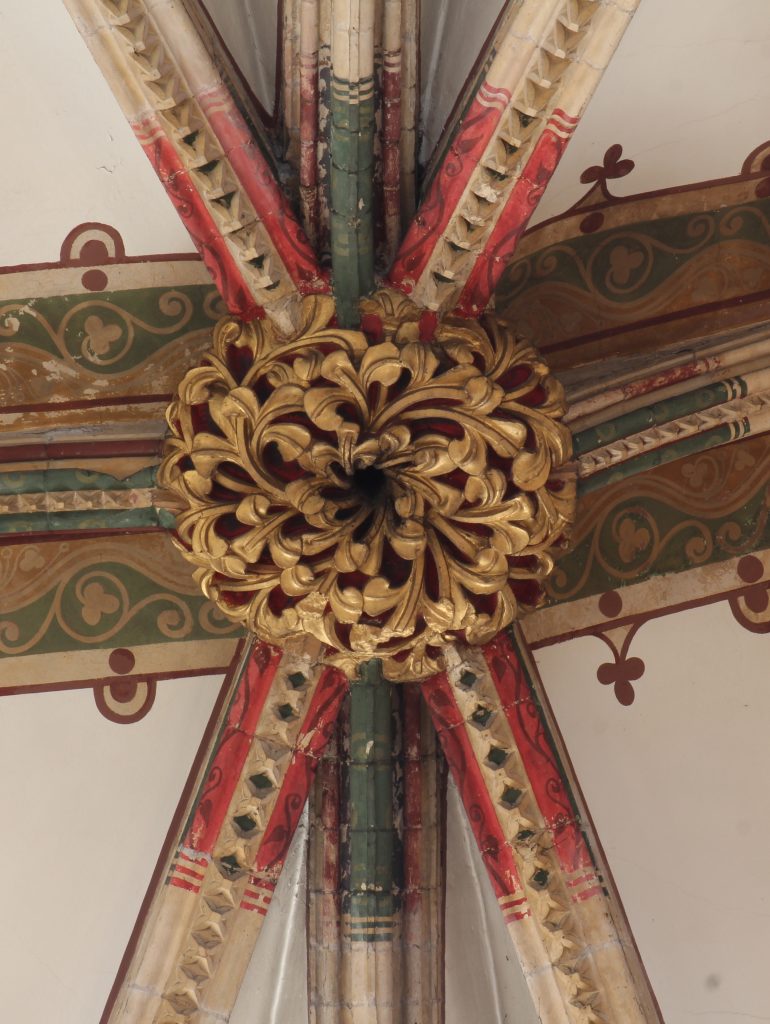
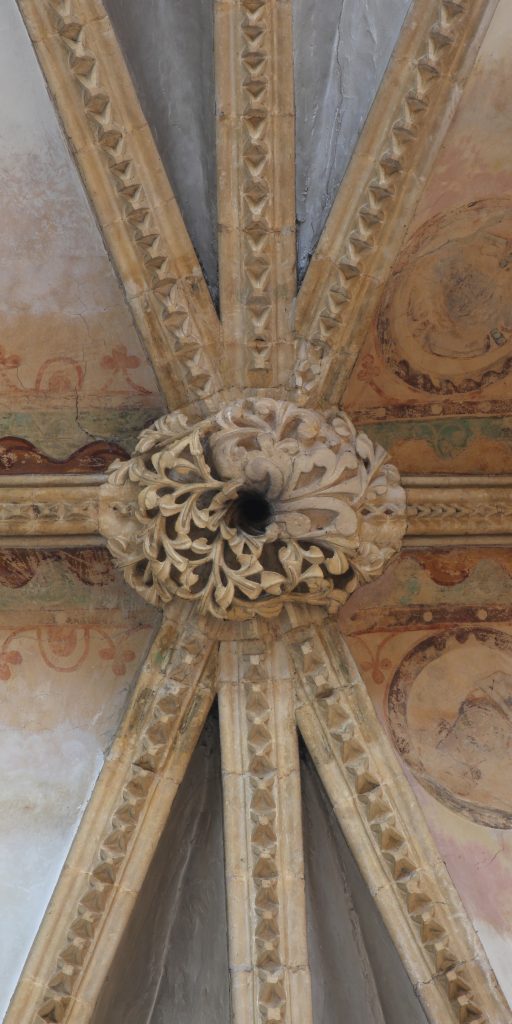
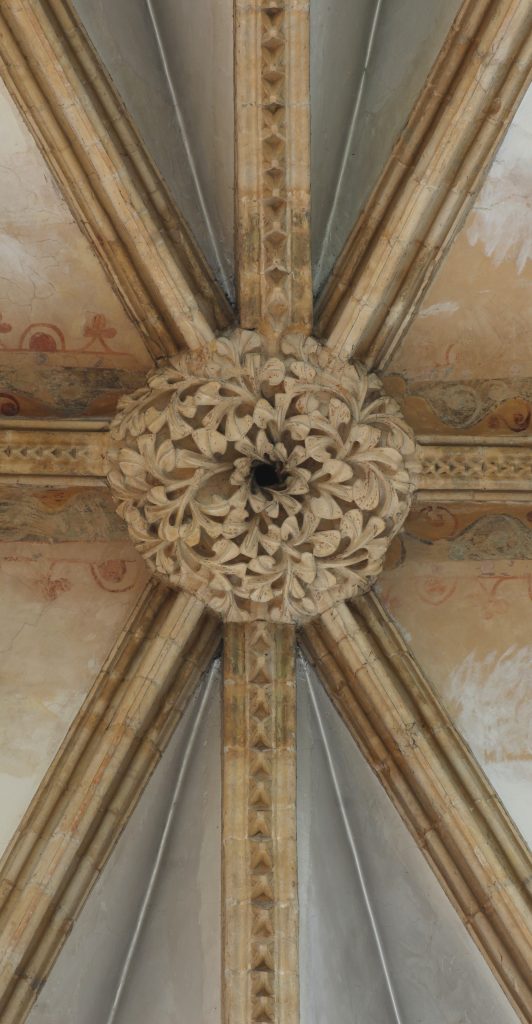
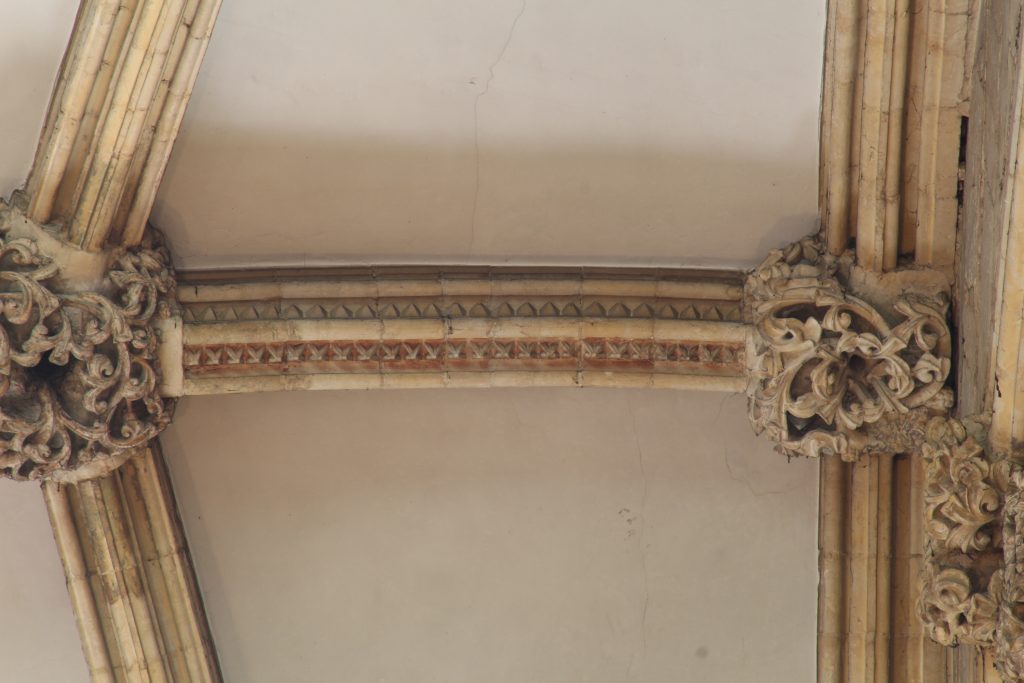
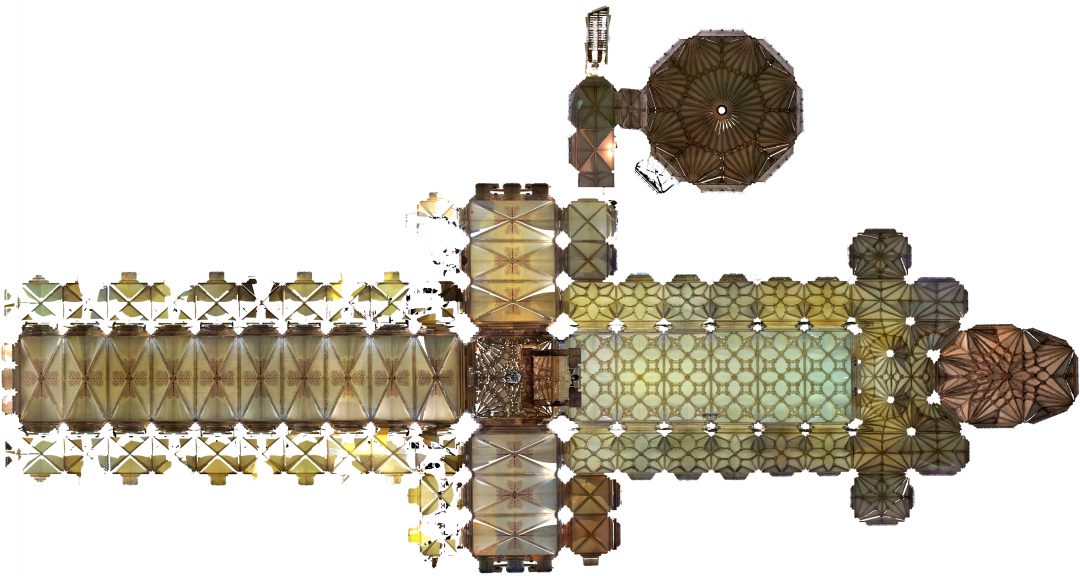
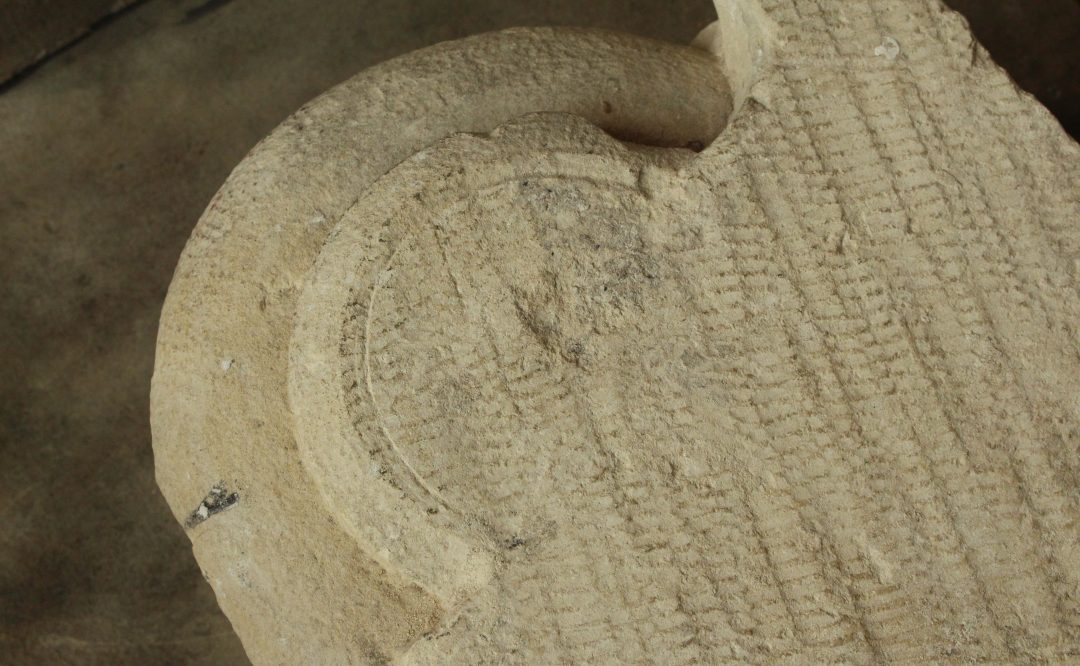
4 Comments
[…] Learn more about foliate sculpture in the bosses at Lincoln […]
[…] Find out more about the bosses at Lincoln […]
[…] Find out more about the sculpted bosses at Lincoln […]
[…] Photograph of longitudinal ridge rib in east crossing vault at Lincoln Find out more about sculpted decoration at Lincoln […]